From January 22nd to 29th 2024, as a journalist, I accompanied a trip to the Dubai Desert organised by Biosphere Expeditions. Participants engage as citizen scientists for mammals, birds and other animals. Here is my report for mammalwatching.com
Team assembly is on Monday, I fly into Dubai on Friday. This gives me two more days to explore the region. I join Matthias, a team mate, to see Ras al Khor wildlife sanctuary. This wetland reserve is renowned mainly for its Greater Flamingos and other birds amidst traffic and a sprawling urban infrastructure. There are mammals too (but the area is closed at night). Vladimir Dinets – looking through the fence – reports Red Fox, Libyan Jird, and tracks in the mud that he thinks could be of a White-tailed Mongoose. There is still a lot of construction going on, but I do recommend the place.
In the evening we visit Mushrif Park, a place which is renowned for Pallid Scops Owl (Otus brucei) and 159 more bird species. Coming from the south, the area west of the main road looks also good for small mammals. inaturalist mentions Five-striped Palm Squirrel (non-native), Brandt’s Hedgehog and even gazelles. But the park is also very popular with picnickers (and it‘s Saturday!). So many people try to get inside the park, that we end up in a traffic jam. We find a bay, where we park the car and then overtake the line of cars on foot. We are denied access to the more natural looking area to the west. When we arrive at the central part, which seems to be everybody‘s aim the air is so thick with barbeque fume that we believe all owls trying to get through this must end as roasted chickens. So coming here to see animals turns out to be a bad choice (also nothing at all in the thermal imager). I still believe, it isworth to be explored at other times.
On Sunday Manuela, another team mate, joins us and we aim for the Hajar Mountains (also spelled Hattar). I had read in an article (Aguhob et al., 2018) about the occurrence of Arabian Tahr in the mountains south of Hajar dam. The idea is to pass the dam and explore the wadi behind it. But upon arrival we come to realise that there is also a lot of construction going on and that the road to the wadi is blocked. I ask a worker at the gate. He replies that access is only allowed for visitors of „the lodge“. I can’t find any lodge on google maps and I don’t know, if there was one, if this would be good news for the wildlife of the area. In theory limited access could mean less disturbance for wildlife. However for us coming here, is another bad choice. We drive on towards Khor Kalba.
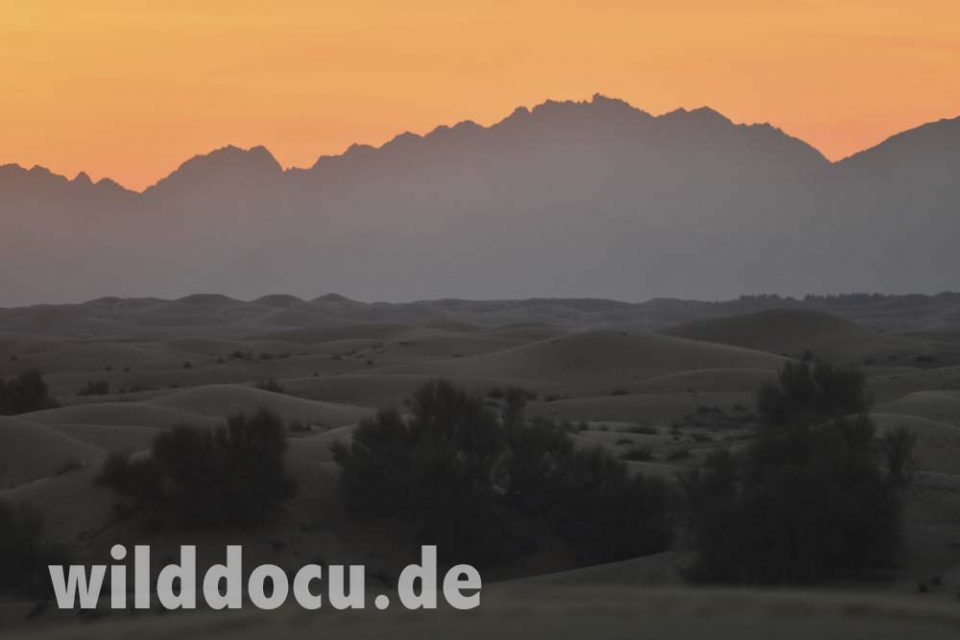
Khor Kalba
Khor Kalba is a wonderful small reserve at the edge of the Indian Ocean with a Mangrove Center and a board walk leading through the mangroves. I had been here in 2022 already. During my first visit I observed Black Rats and Arabian Collared Kingfisher. Apparently only 55 pairs or fewer of this bird subspecies remain. In the United Arab Emirates they are almost entirely restricted to Khor Kalba. The main problem is habitat loss, but they are also threatened by the rats. During my first visit I saw the rats using the board walk and especially the garbage bins along the way, which of course enhances the number of rats in the mangroves, which threatens the birds even more. I wrote a mail to the manager and not for nothing. One year later and I find all the garbage bins in the mangroves removed. Success!
Besides many birds and Green Sea Turtles (Chelonia mydas), we see our first Sand Gazelles (Gazella marica) from a distance.
Next stop: Al Hefaiyah Mountain Conservation Center
The centre comprises a number of landscape enclosures in which native mountain animals are housed in a semi-wild environment. For me the Arabian Wolf and the Pharao Eagle Owl is of particular interest. The wolf is a candidate to be released into the Dubai Desert Conservation Reserve, where we will be coming week. The owl will be one of our major study species.
We are about to leave, when we see some squirrels playing at the parking lot. They turn out to be non-native Three-striped Palm Squirrel (Funambulus palmarum). After a long day we return to our hotel. Following day: our project in the Dubai Desert Conservation Reserve commences.
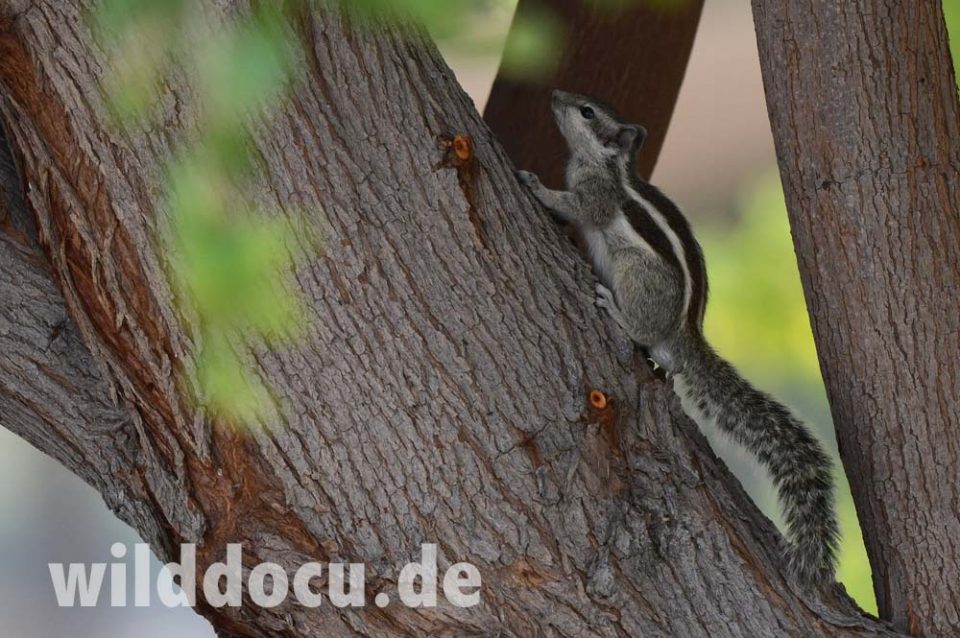
Dubai Desert Conservation Reserve (DDCR) with Biosphere Expeditions – basic facts, aims and objectives
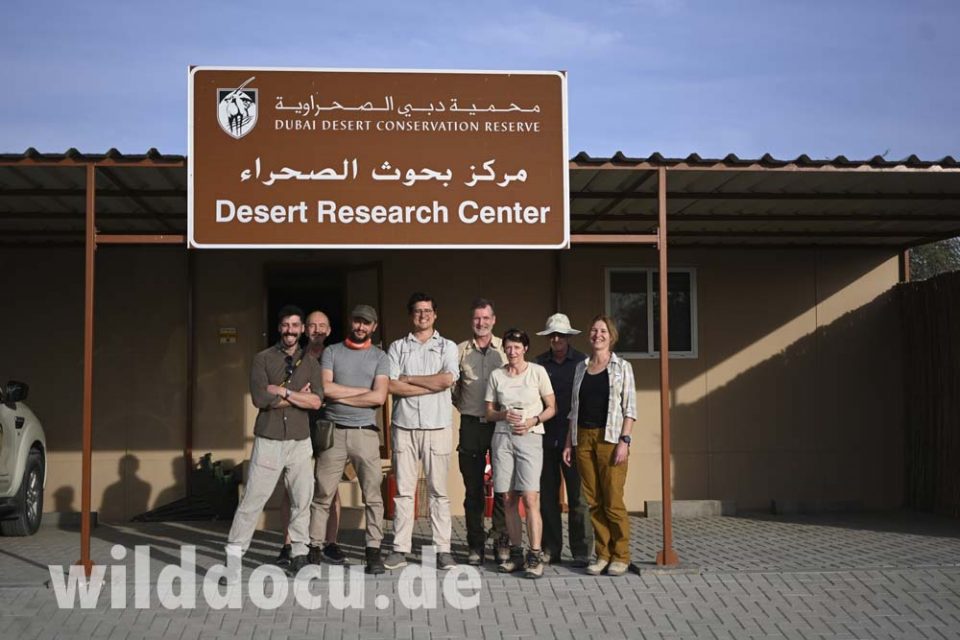
The primary aim of our staying is to help to ascertain the abundance and distribution of some major animals like antelopes and certain bird species in the Dubai Desert Conservation Reserve (DDCR). The assessment and our staying is organised by Biosphere Expeditions, an award-winning citizen-science-based wildlife conservation non profit organisation.
The reserve comprises 225 km², which is 4,7 per cent of Dubai’s total land area. The DDCR is a representative of the Dubai inland desert ecosystem and is characterised by a sandy desert environment consisting of sand dunes interspersed with gravel plains. There is one rocky outcrop in the north of the reserve. Conservation in this area started in 1999 when the Al Maha Desert Resort was opened within a protected area of 27 km² (Al Maha Reserve).
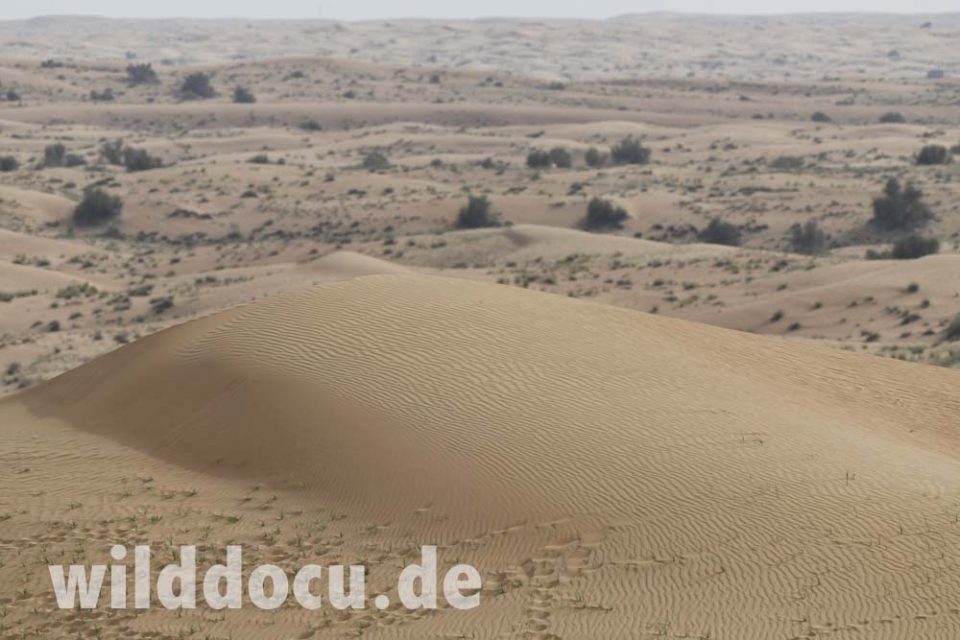
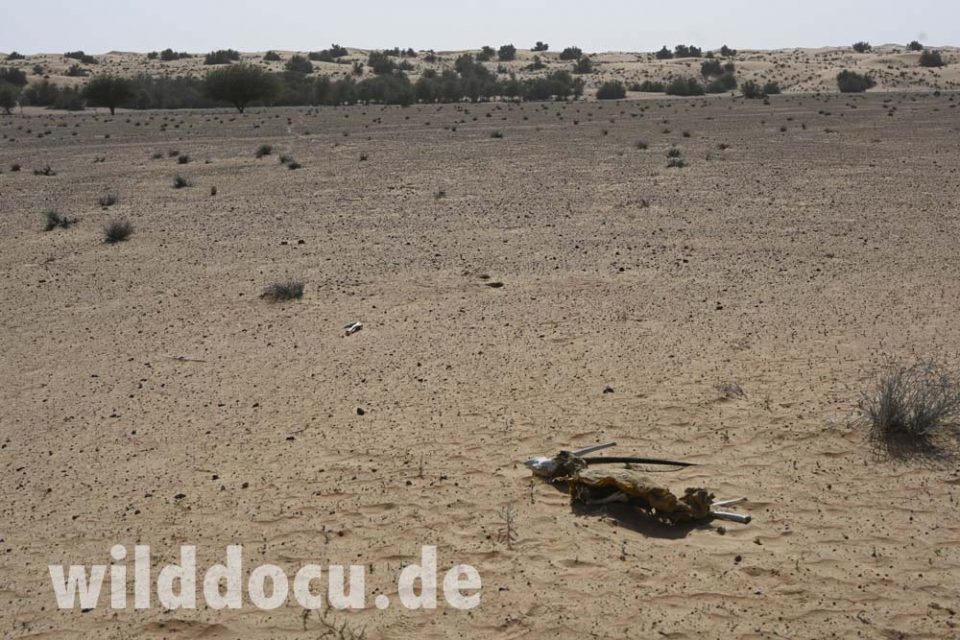
Monitoring desert animals basically means counting them and analysing camera trap photos. Scientists manage the assessment and instruct the participants – who pay for their attendance. The main species of interest are the following, which can be divided in three groups. Daily seen species: Arabian Oryx, Sand Gazelle, Arabian Gazelle; rather rarely seen species: Arabian Red Fox, Pharaoh Eagle-Owl and Lappet-faced Vulture; and very hard to see species: Sand Fox, Gordon’s Wildcat, Macqueen’s Bustard.
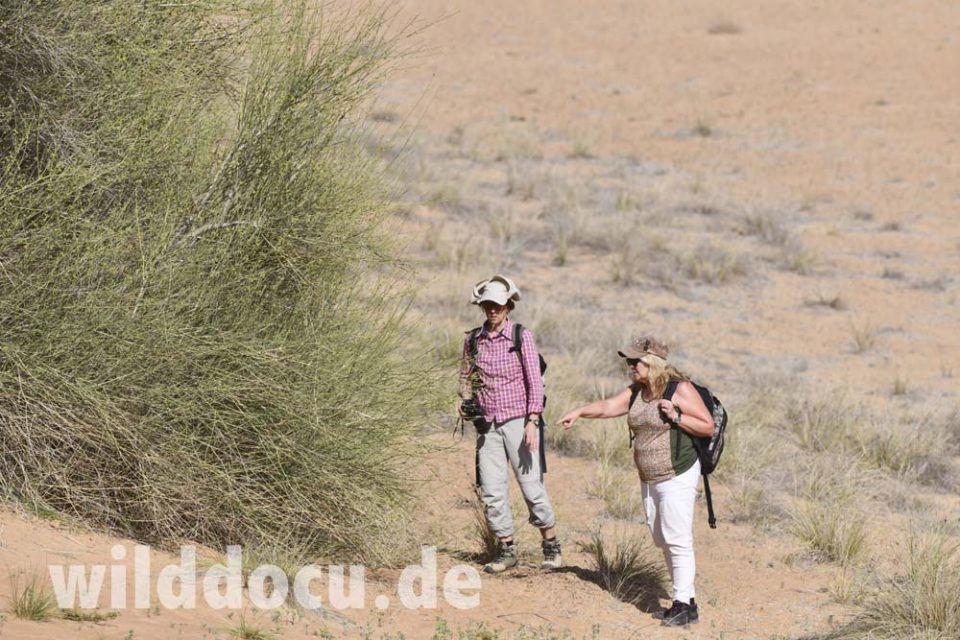
In the past other teams had also captured animals and collected samples for DNA analysis. Based on the results, the project scientists can then develop appropriate management plans that will provide a safe environment for the target species to thrive in.
Expedition base
The field base is a tent camp (consisting of a Bedu mess tent and two person dome tents for sleeping in). Each person will have its own comfortable dome tent. And there are campsite-style flushing toilets and showers. All meals are provided.
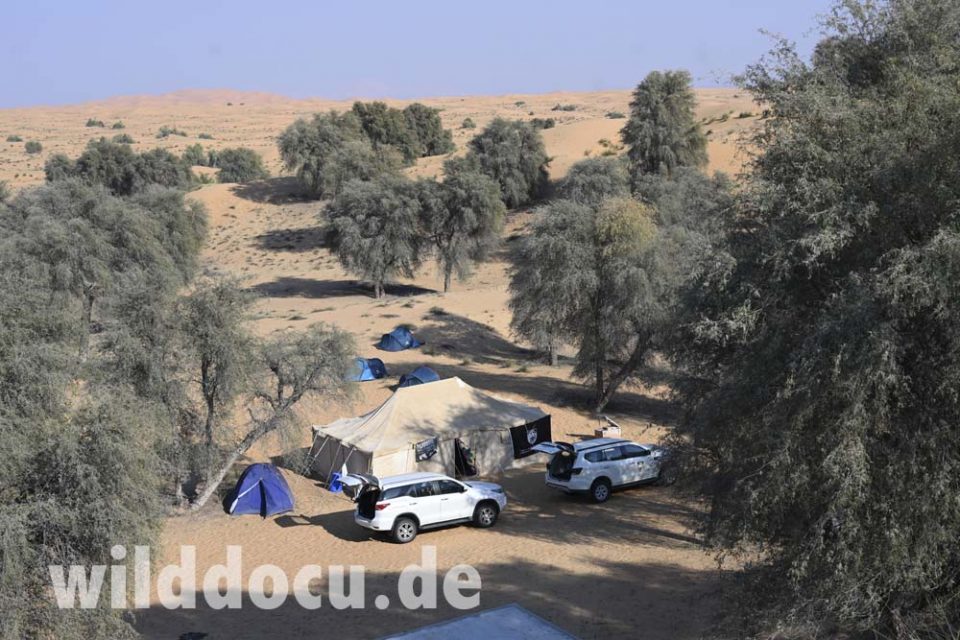
Weather
The UAE has a subtropical, arid climate with sunny blue skies most of the year. The average maximum temperature during the expedition months is around 24°C with an average minimum of 14°C (with highs peaking at 32°C and lows 8°C). Sometimes clouds and unsettled mid-latitude weather disturbances can penetrate into the Gulf during the expedition months, bringing changeable weather and cool, winter shamals in their wake. During clear nights the temperature can drop to close to zero. It does happen occasionally that it snows, but most people coming from northern countries will fly home with the impression that they enjoyed a few summer days during winter time.
Fauna
It is important that all participants are able to recognise the main species, therefore Biosphere Expeditions provides a “manual”. I also offer a short introduction to the DDCR’s mammal fauna here to show what you can expect and help you recognise what is what. The UAE National Checklist of terrestrial mammals runs to 43 species. At least three species on the checklist, and possibly as many as six, have become extinct within the UAE in recent historical time. (Hellyer and Aspinall, 2005)
Arabian Oryx (Oryx leucoryx)
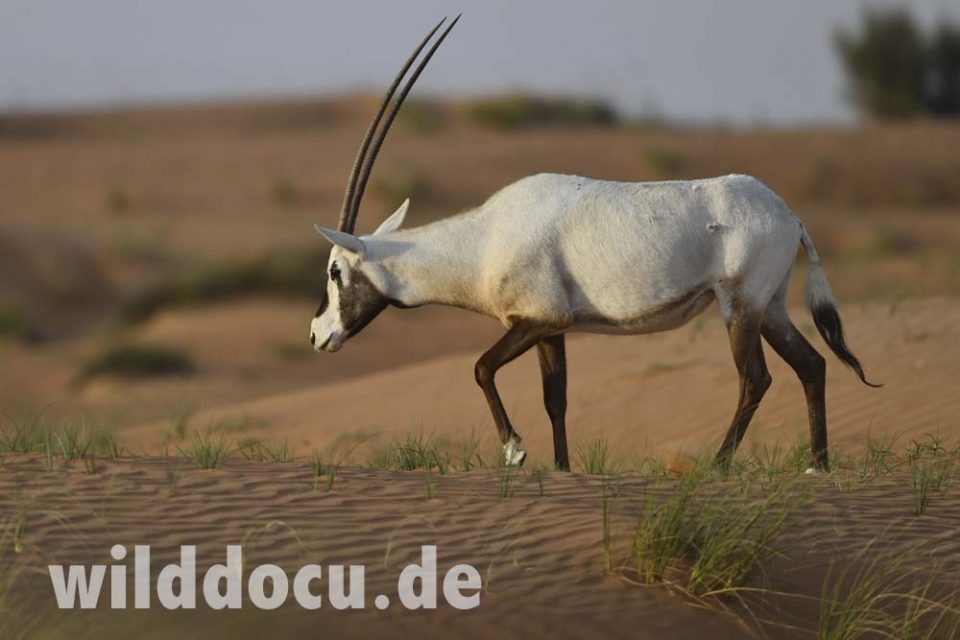
With its size (largest antelope in the region), pure white colour and exceptionally long horns, it is very charismatic and draws the attention of every naturalist. Oryx once roamed all across Arabia, but the advent of firearms saw their rapid decline. By 1972 it was extinct in the wild. 100 captive animals were reintroduced into the DDCR in 1999. The population has steadily grown to over 500. Ironically overpopulation is a concern today. Introducing the Arabian Wolf could be a next step of managing the Oryx in the DDCR.
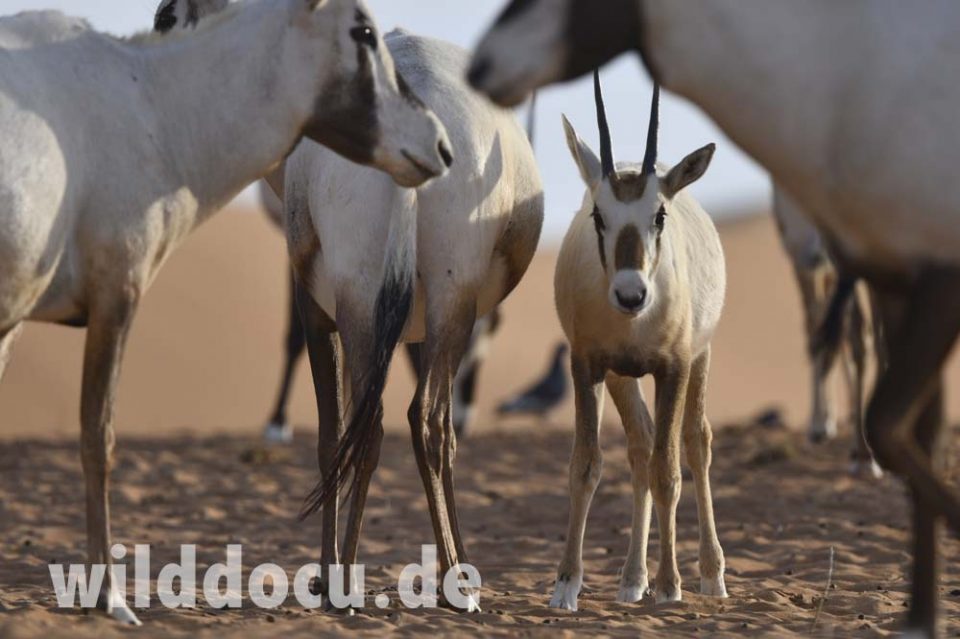
Talking about size: The Arabian Oryx is actually a medium-sized antelope on a global scale, it is the smallest of the six Oryx species, but a giant compared to the gazelles in the DDCR. (Male’s shoulder height is up to 102 cm; weight is up to 75 kg). The pure white fur and the very long slender horns (60-150 cm – both sexes) generally make them easy to determine. The flank stripe is absent or only an indistinct smudge. The lower limbs are a chocolate brown to black with the exception of pure white pasterns (“socks”). The face and nose have dark patches and there is often a dark stripe on the front of the neck. In summer the dark patches are lighter or are often absent altogether.
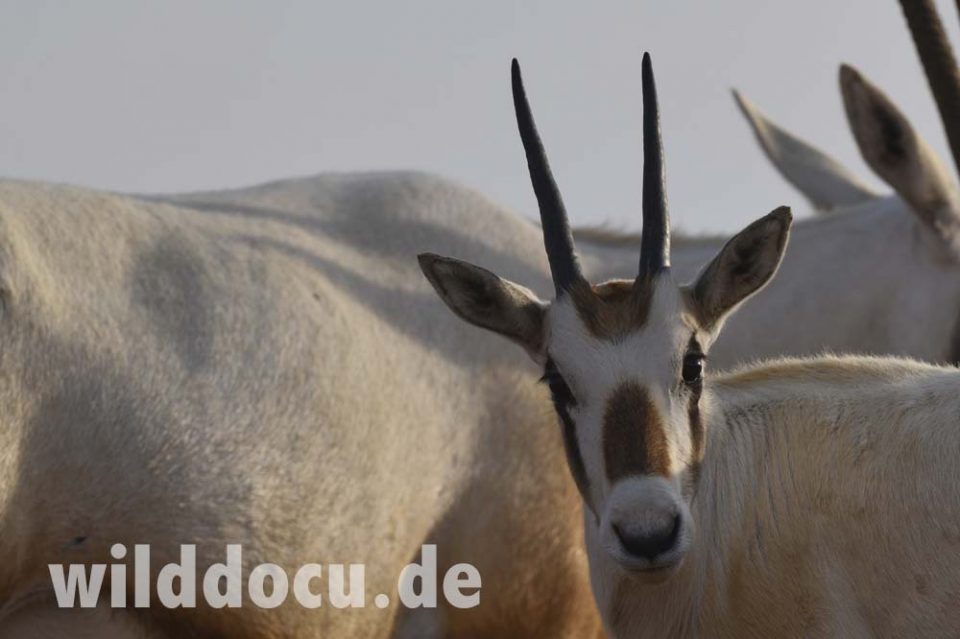
Arabian Gazelle (Gazella arabica)
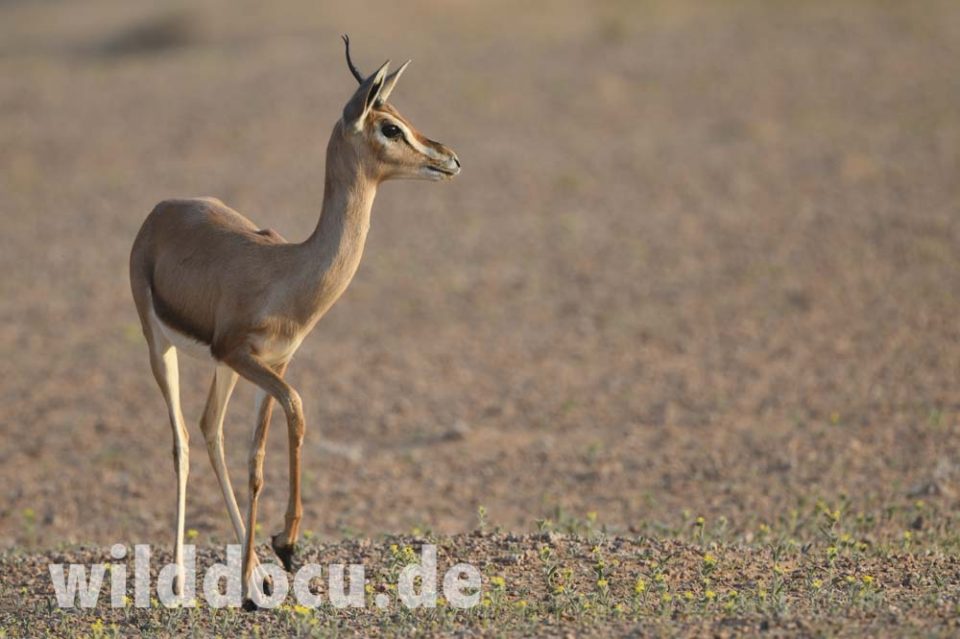
The Arabian Gazelle is the smallest antelope in the DDCR, weighing only 12-16 kg. The coat is fawn to dark-brown on the back, neck and head, while the belly and buttocks are pure white, separated on the flanks by a dark narrow band.
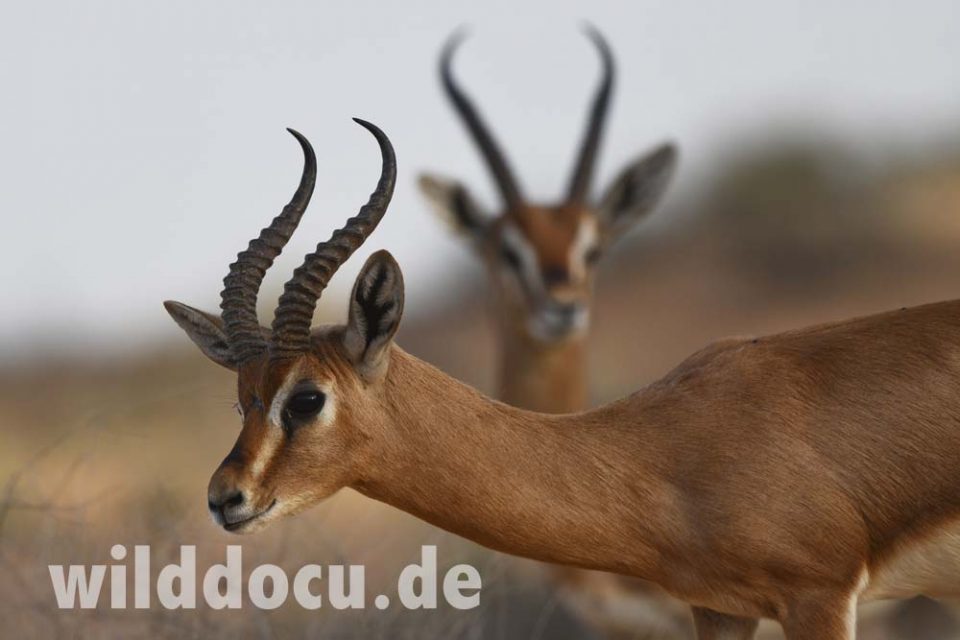
The male’s horns are quite long (22–29,4 cm) with noticeable rings, while those of females are generally shorter (5,8-11,5 cm) with less conspicuous rings. Juveniles have no horns, or short ones without rings.
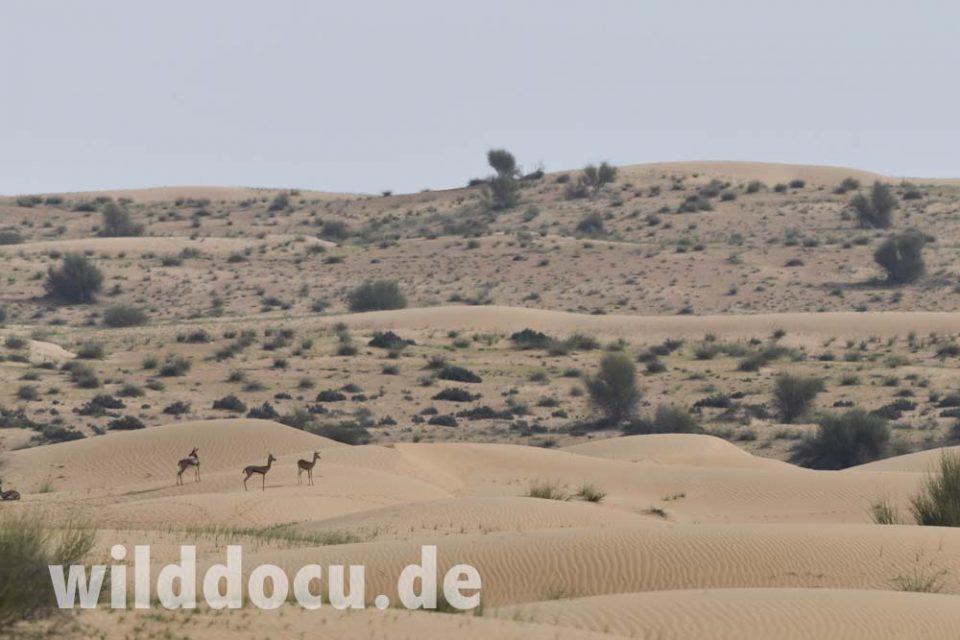
Arabian Gazelle move in small herds of 4-6 animals and most grazing takes place at dawn and dusk. They rest during the hottest hours under shelter, which may be trees or bushes in the desert. Currently the DDCR contains approximately 400 Arabian Gazelle.
Sand Gazelle (Gazella marica)
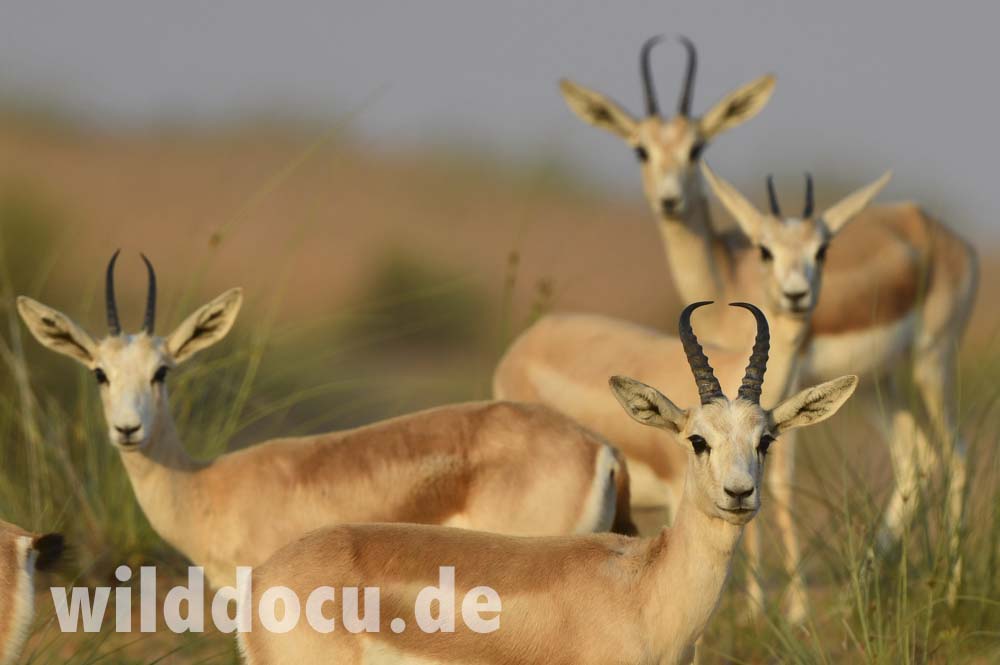
Until recently, the Sand Gazelle was considered a subspecies of the Goitered Gazelle (Gazella subgutturosa), as Gazella subgutturosa marica. A 2010 genetic study established that it is a distinct lineage, and it is now considered a separate species. This is the second largest antelope of the UAE.
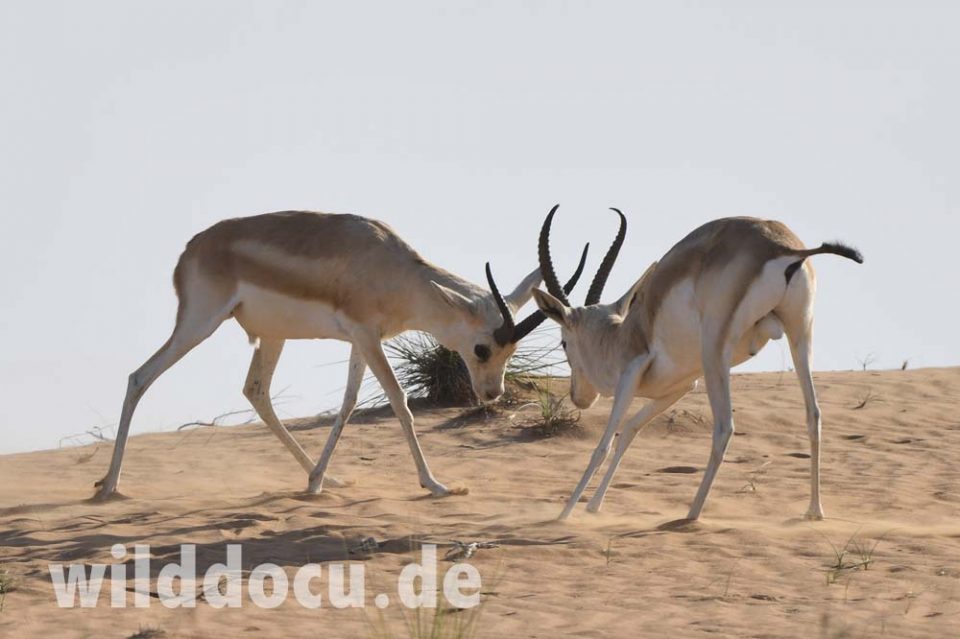
The Sand Gazelle is robustly built – males weighing up to 22 kg / females up to 18 kg –, with a whitish or pale yellow-brown colour, being overall lighter than the Arabian Gazelle. There is not really a darker stripe between the white underside and the beige flanks. But there is a lighter, lateral band, that makes the strip below look darker.
Sand Gazelles have only rudimentary body and facial markings. Face and forehead tend to be white, especially in old animals.
Males boast long, elegantly curved, lyre-like, black horns that diverge outwards and turn back in at the tip. Females also have well-developed horns, which are slightly smaller, slimmer and do not widen in a lyrate curve. Juveniles have no horns, or short ones without rings. Their preferred habitat is the sandy desert areas of shifting dunes. Herds commonly consist of 6-12 individuals. Currently the DDCR contains around 140 Sand Gazelle.
Arabian Red Fox (Vulpes vulpes arabica)
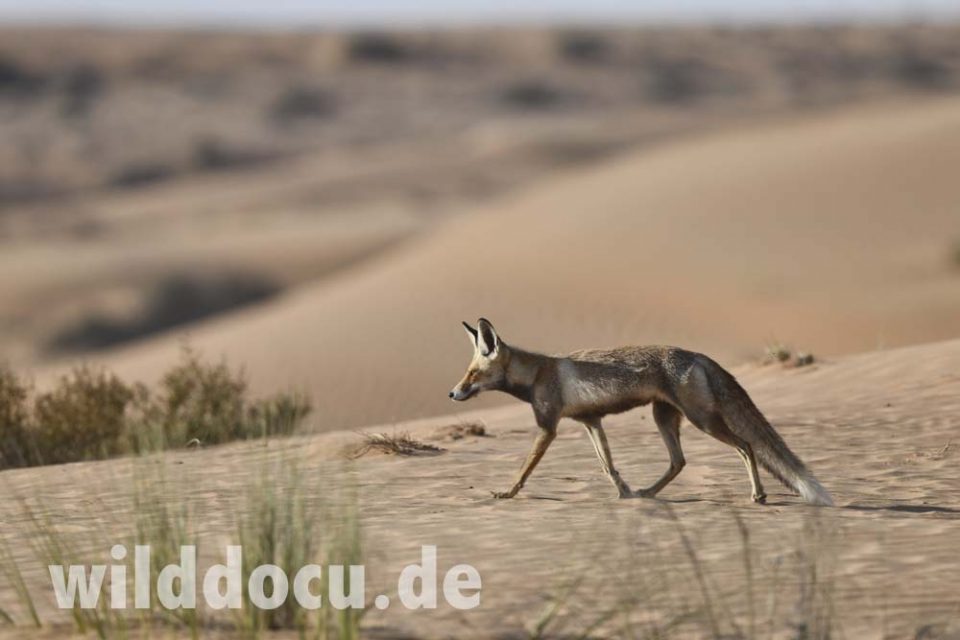
It is similar to other Red Fox subspecies. However, it is smaller than northern subspecies and adapted to desert life with a rather pale brownish-red colour and larger ears. The throat is black. The lower legs and ears are reddish. The reddish-brown tail is tipped in white. It is bushy, but compared to northern forms appearing rather slim.
Sand Fox (Vulpes rüppelli), also known as Rüpell’s Fox
The Sand Fox is a desert-adapted carnivore. It is much smaller than the Red Fox, slighter in built, weighing only up to 2,3 kg. “Head-body” in males is only 40-55 cm for males. The tail can be almost 40 cm long. Females are smaller. The dorsal pelage varies from pale sandy to greyish and even sometimes reddish. Ears are long, they lack darker markings on the back. The tail is bushy, usually tipped white and has a black patch at the base of the tail – a useful diagnostic feature. Blanford’s Fox (Vulpes cana): is the “mountain equivalent of V. rüppelli”, found to be present in the UAE only in 1995, although it is now known to be common.
Arabian Wildcat (Felis lybica lybica) or Gordon’s Wildcat
The Arabian Wildcat looks very similar to a domestic cat. Indeed, the biggest threat to the survival of the Gordon’s wildcat as a species is the interbreeding with domestic cats.
The coat colour ranges from reddish to sandy yellow to tawny brown to grey, and is typically marked with faint tabby stripes and spots. A characteristic feature is a reddish or rusty-brown tint to the backs of the ears, and three black rings on the tail, which ends in a black tip. There are also black stripes on the inner foreleg and the soles of the feet are also black. Their preferred habitat is the vegetated dunes, gravel plains, and mountains, in which they hunt a mainly carnivorous diet at night.
Rodents
According to the Biosphere Expeditions manual there are five species of native rodents in the DDCR:
- Lesser Jerboa (Jaculus jaculus),
- Arabian Jird (Meriones arimalius),
- Baluchistan Gerbil (Gerbillus nanus),
- Cheeseman’s Gerbil (Gerbillus cheesmani),
- Arabian Spiny Mouse (Acomys dimidiatus)
Khafaga and Bell (2015) found the following species in the DDCR during a study. Indices of species richness and diversity were greatest in gravel plains, followed by sand dunes.
- Cheesman’s Gerbil (Gerbillus cheesmani): the most frequent species
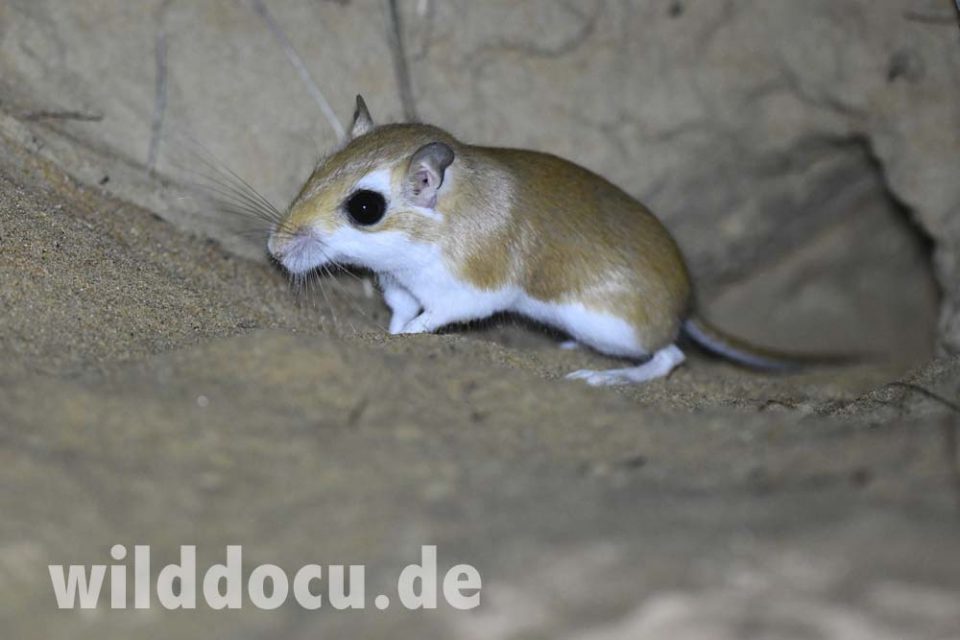
Sundevall’s Jird (Meriones crassus): second most common
Baluchistan Gerbil (Gerbillus nanus)
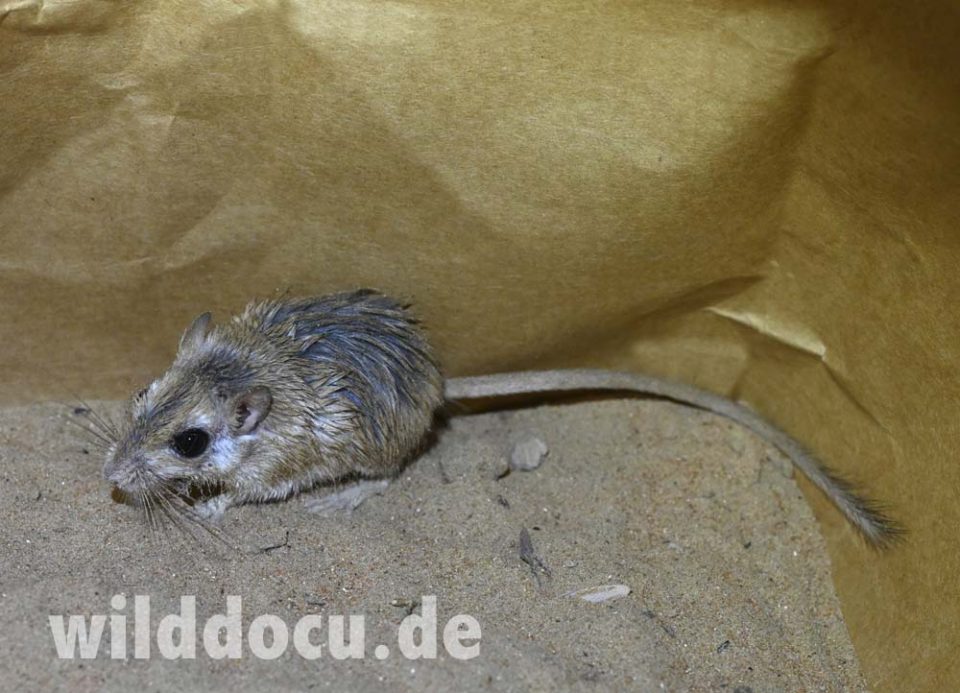
Egyptian Spiny Mouse (Acomys carhinus): The Arabian population was long considered a subspecies of the Egyptian Spiny Mouse (Acomys cahirinus dimidiatus), it is now a species by itself: Acomys dimidiatus. It was found only in one location of the reserve (not specified). Since it lives in rocky habitats, I assume it to occur at the northern tip of the reserve, the only known rocky place in the DDCR.
Arabian Jird (Meriones arimalius): was expected, but not found during the survey.
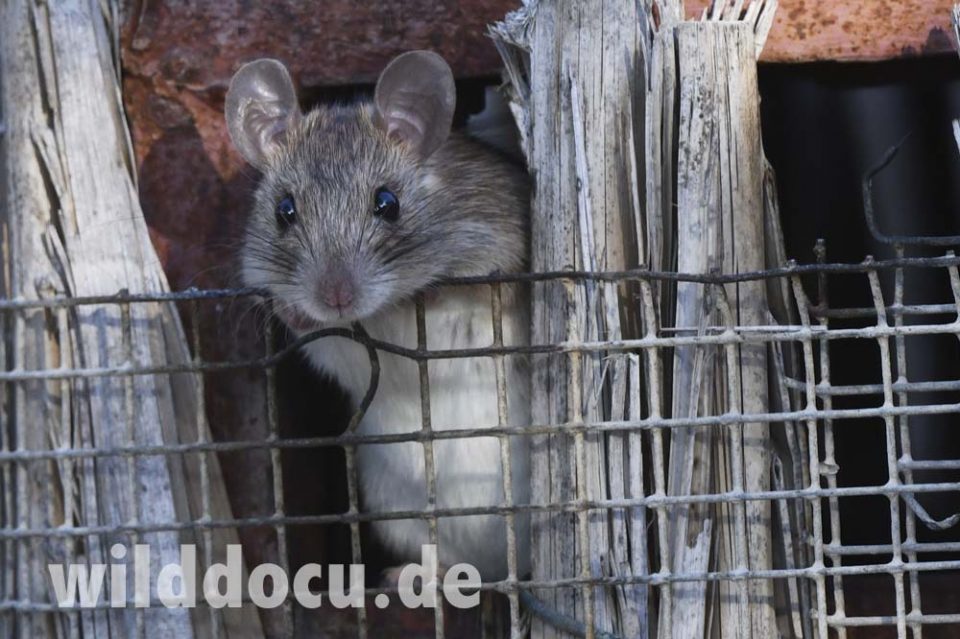
Some other mammals reported from the UAE / DDCR (Hellyer and Aspinall, 2005)
Bats: Following species are reported from the UAE – which could show up in the DDCR any time.
- Egyptian fruit Bat (Roussetus aegyptiacus): to be expected, where there are fruiting trees.
- Muscat Mouse-tailed Bat (Rhinopoma muscatellum): A preference is shown for rocky areas, where caves are used for roosting.
- Naked-bellied Tomb Bat (Taphozous nudiventris): This species has been recorded both in mountain districts of the UAE and, remarkably, also on Das Island, some 100 kilometres out into the Arabian Gulf.
- Trident leaf-nosed Bat (Asellia tridens): This bat is also widespread in the UAE and is one of the smallest bats present.
- Persian leaf-nosed Bat (Triaenops persicus): reported to have similar habits to the preceding species, but to be somewhat scarcer throughout its range.
- Sind Serotine Bat (Eptesicus nasutus): This species was first recorded in the UAE in 1991 at a verdant housing complex, then in 1993 at a roost in a rock outcrop in the sandy desert.
- Kuhl’s Pipistrelle (Pipistrellus kuhlii): This is probably the commonest bat in urban areas of the UAE.
- Hembrich’s long-eared Bat (Otonycteris hemprichii): Within the UAE this species has so far been recorded only from Ra’s al-Khaimah.
More species from UAE:
- Cape Hare (Lepus capensis): Hares in the UAE are locally called Arabian or Desert Hares. It is most common in well-vegetated scrub and occurs in the DDCR. – Only one was seen.
- Ethiopian Hedgehog (Paraechinus aethiopicus): is the most frequently encountered hedgehog in the UAE and the only one showing up in the DDCR. UAE records are from gardens, cultivations and plantations, as well as open wooded habitats, sandy and stony plains and desert, and the mountain flanks. A second UAE species, Brandt’s Hedgehog(Paraechinus hypomelasis) has so far not been found in the DDCR.
- Savi’s Pygmy Shrew (Suncus etruscus): discovered for the first time in the UAE in August 2000. Suncus etruscus is the smallest of the mammals of Arabia. Very few animals have been trapped so far.
- Indian Grey Mongoose (Herpestes edwardsii): An oriental species, the Indian grey mongoose was almost certainly introduced into the UAE. Dependence on water may limit their UAE range, although the expansion of habitats such as palm groves and gardens may facilitate further dispersal.
- White-tailed Mongoose (Ichneumia albicauda albicauda): This mongoose is a mountain-dweller, avoiding open desert, and normally found near permanent water.
- Honey Badger (Mellivora capensis): This species was first definitively recorded in the UAE in August 2005.
- Striped Hyaena (Hyaena hyaena sultana): There have been no confirmed sightings of hyaena in the Emirates since 1984.
- Sand Cat (Felis margarita harrisoni): Very few confirmed sightings of sand cat from the UAE exist.
- Arabian Caracal (Caracal caracal schmitzi): In the UAE, the caracal is primarily found in the mountains and adjacent areas, although occasional unconfirmed reports have also come from the deep sands. Very few sightings in general.
- Cheetah (Acinonyx jubatus): extinct in Arabia, the last report being of one shot in Oman in 1977. Although the gravel plains in the south-east of the UAE and adjacent areas of Oman would appear to have been suitable for cheetahs, there are no historical records of the species from the Emirates, or any other evidence in support of its former presence.
- Arabian Leopard (Panthera pardus nimr): is critically endangered; it favours the rugged mountains of the region. Captive-breeding programs have been established during the early 1980s.
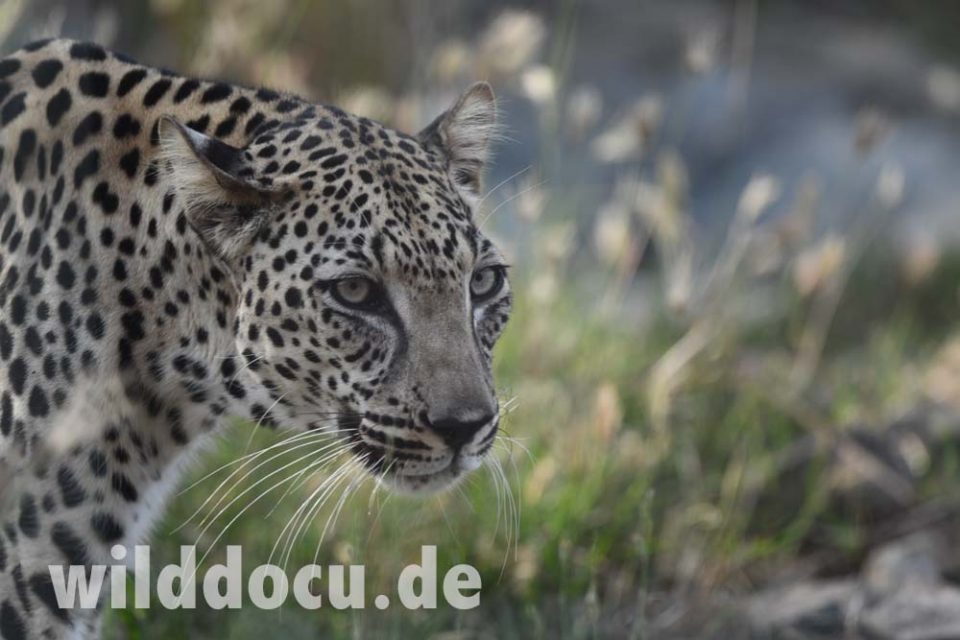
- Arabian Wolf (Canis lupus arabs): It once inhabited both the mountains and desert plains of the UAE. It is thought to be extinct in the wild. Populations survive in Oman, so they could show up again any time. It is a candidate for a reintroduction in the DDCR.
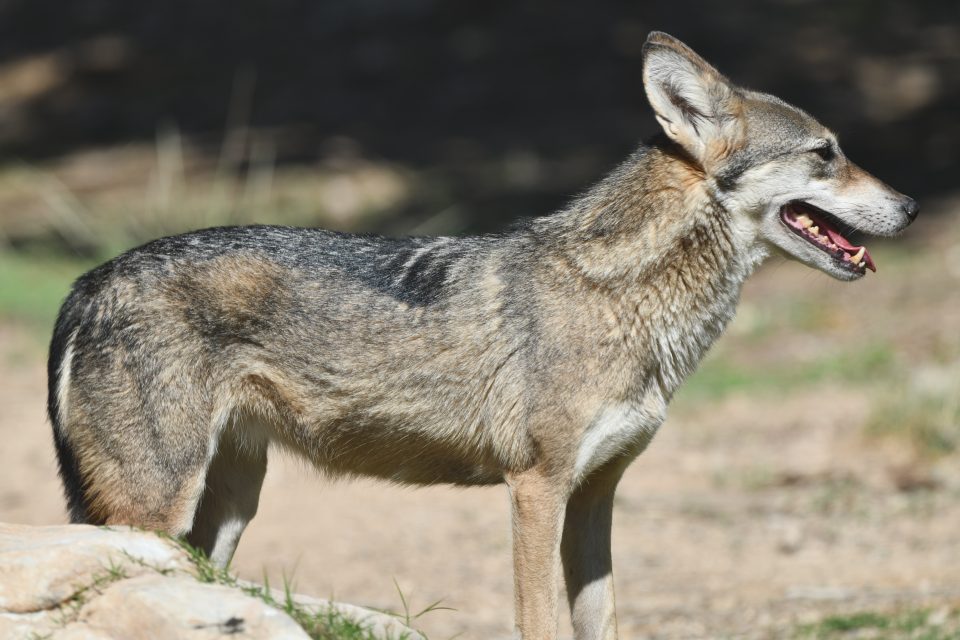
For Arabian Tahr (Hemitragus jayakari) and Barbary Sheep (Ammotragus lervia) you could have a look on my 2022 report.
Of the 83 bird species I saw, I here just want to highlight my favourite encounter:
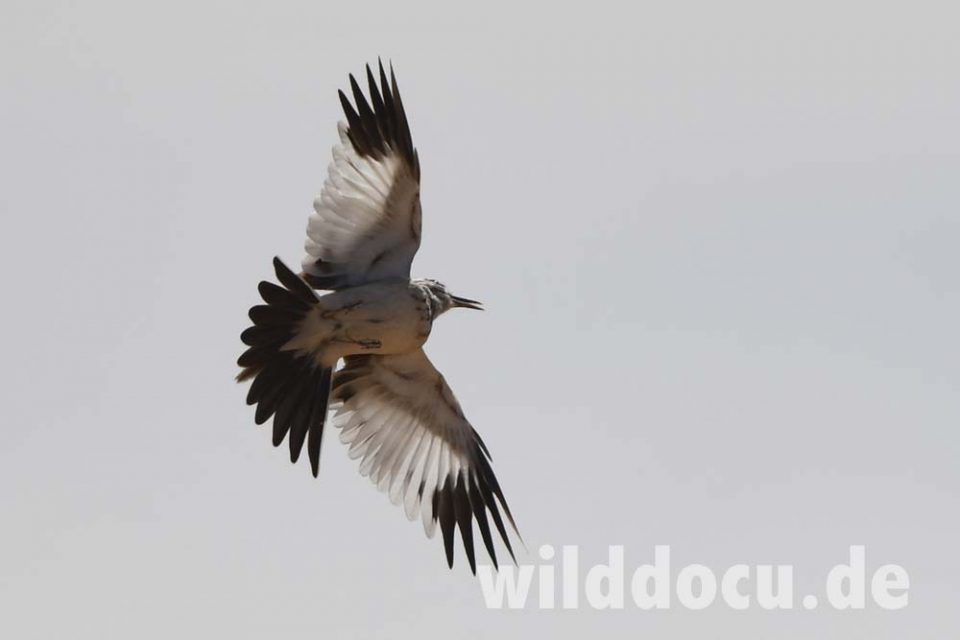
Reptiles of course were also seen during our staying:
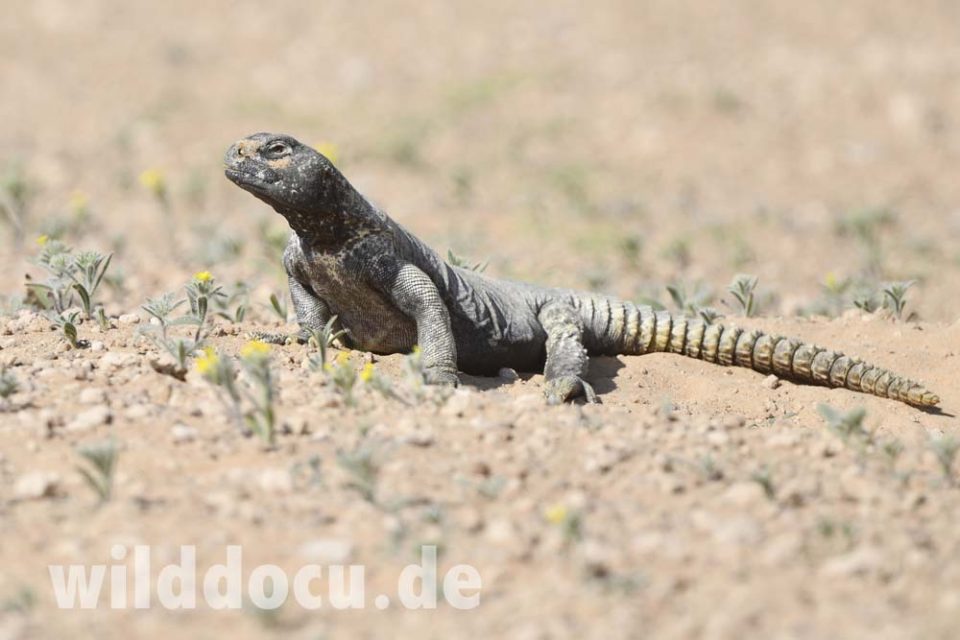
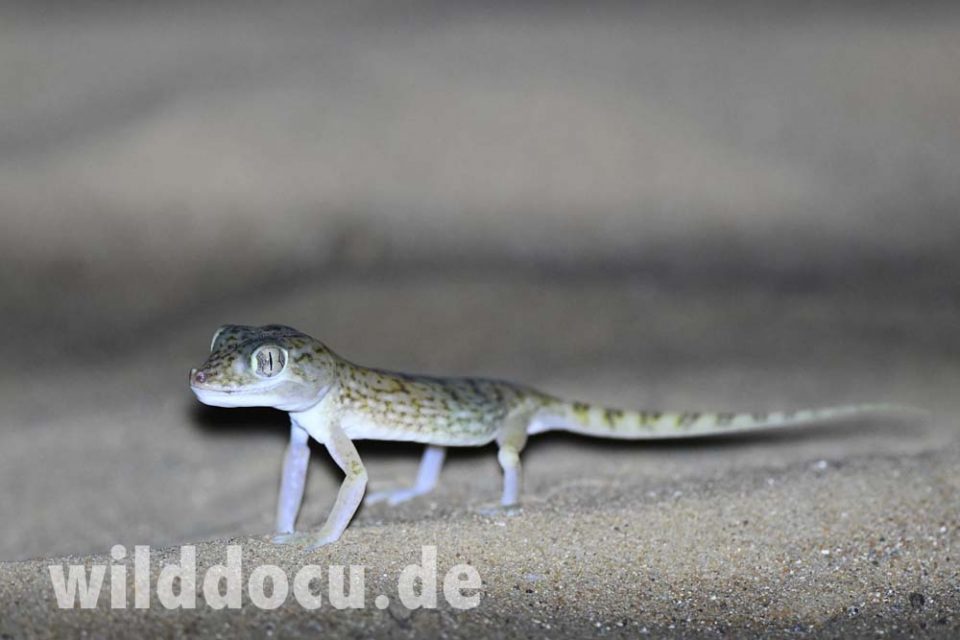
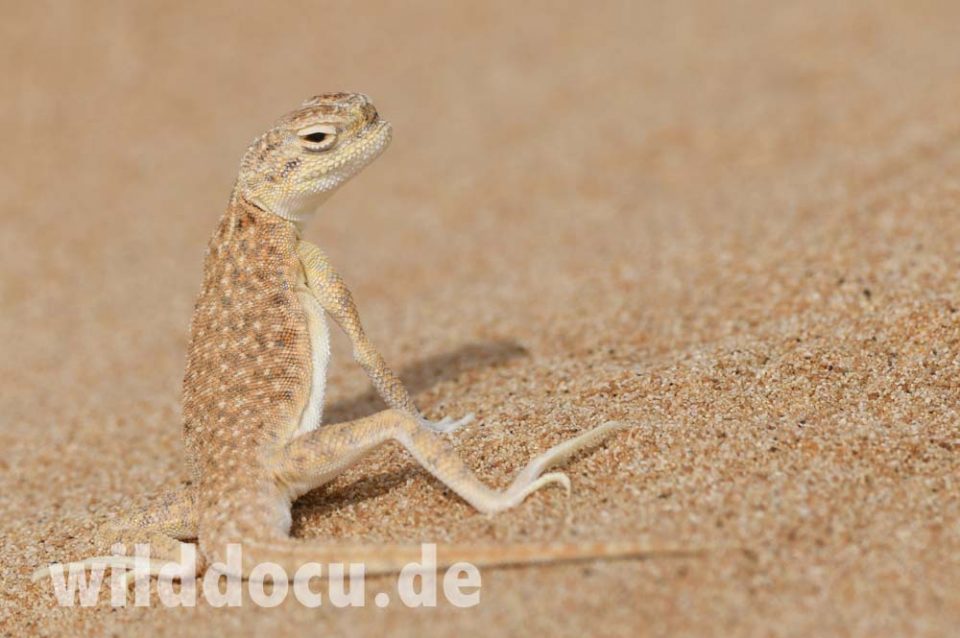
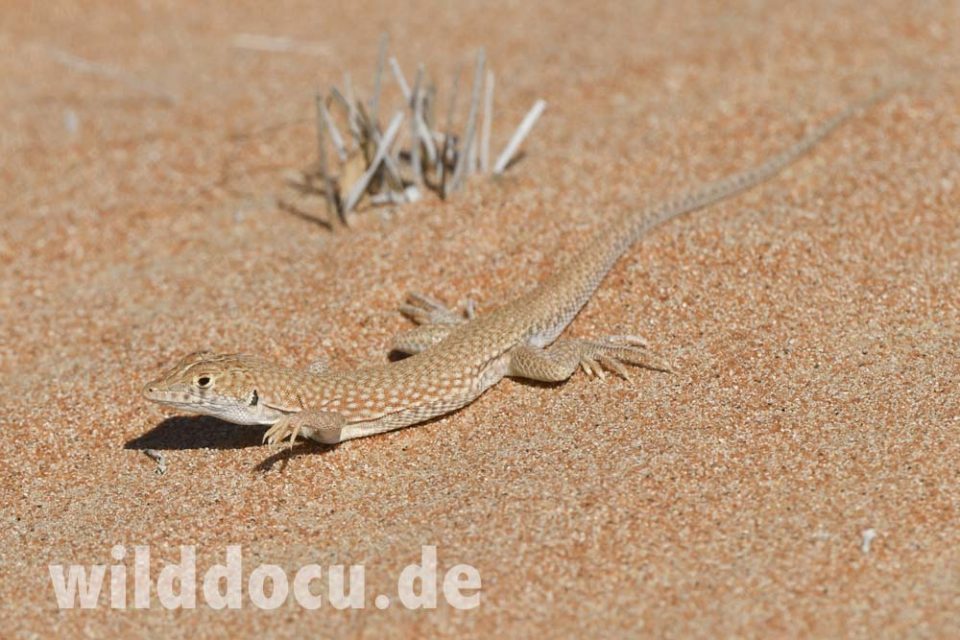
Expedition work
An expedition leader and local scientists prepare the participants for their fieldwork tasks and explain the research methods and goals. Talks are organised to make you familiar with safety, the equipment and the research (and your part in it). You work from a field base (see above). After a training phase the participants venture out in small groups to conduct the surveys.
Species encounter in quadrant survey: The reserve has been split into 62 quadrants of 2×2 km with an observation point close to the centre. From this vantage point the participants carry out a 360º circular observation of the surrounding area with binoculars for 30 minutes, during which all species encounters are recorded in data sheets.
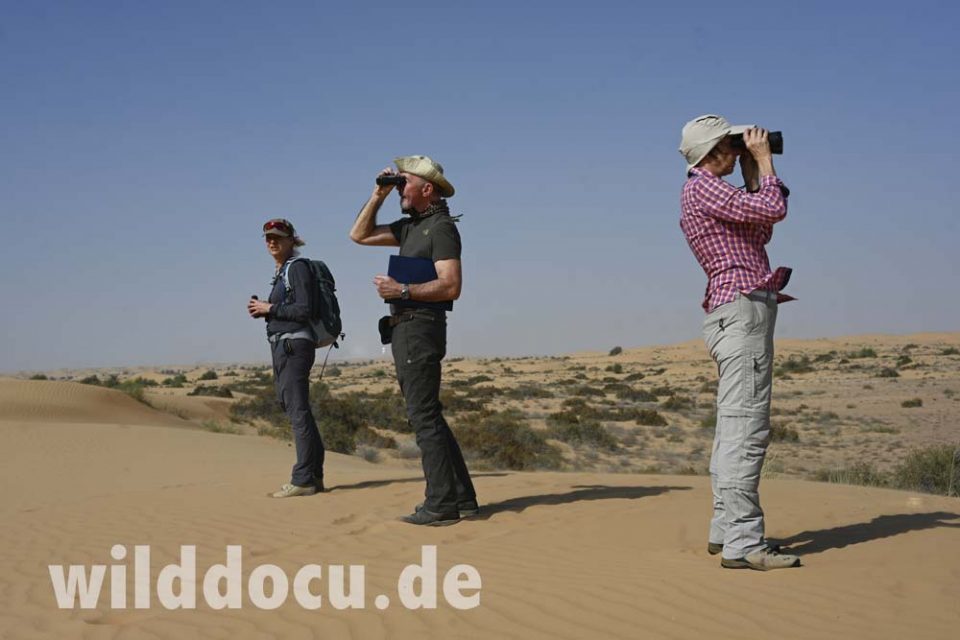
Bird monitoring: The team visits preselected areas to do a Bird census. Several points are given to you. All birds seen during 10 min, are being recorded.
Pharaoh Eagle-owl survey: Previously identified nesting and roosting sites are revisited along with previously selected survey sites. Participants record number of individuals, coordinates, and behaviour (roosting or nesting) in the data sheets.
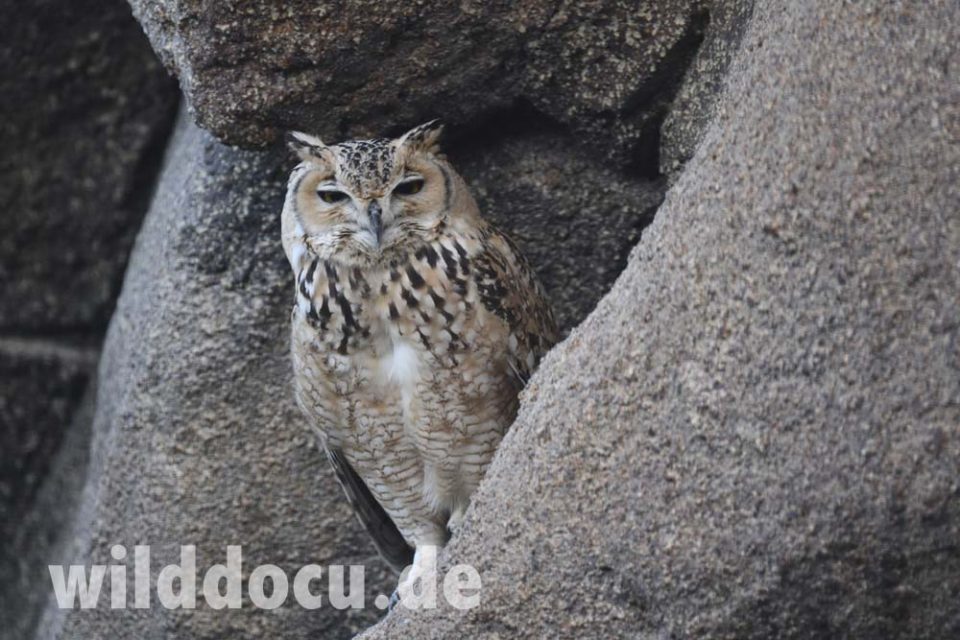
Camera traps survey: As some species in the desert environment are rare and elusive, camera traps are one of the best tools to collect information. You will be setting up and / or retrieving camera traps distributed across the DDCR.
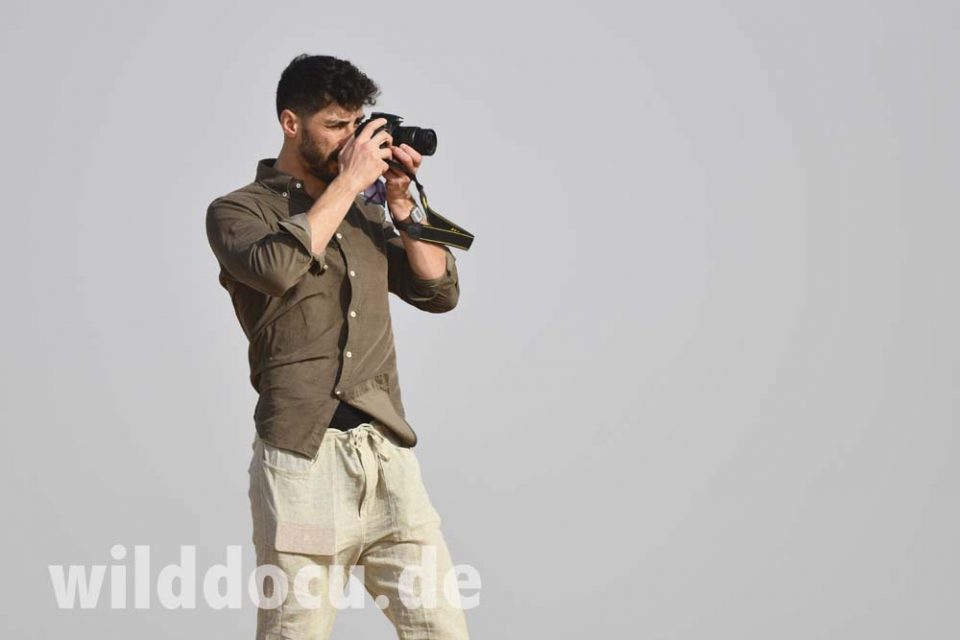
Random encounters: Whenever you are in the DDCR and come across something interesting, which you think is worth reporting, record it in a random encounters data sheet. Supplement your record with pictures or other pieces of evidence where possible. Examples are: Vultures gathering round a carcass; a large, less common reptile or Oryx groups of more than 10 individuals. If you are a birder, feel free to record away.
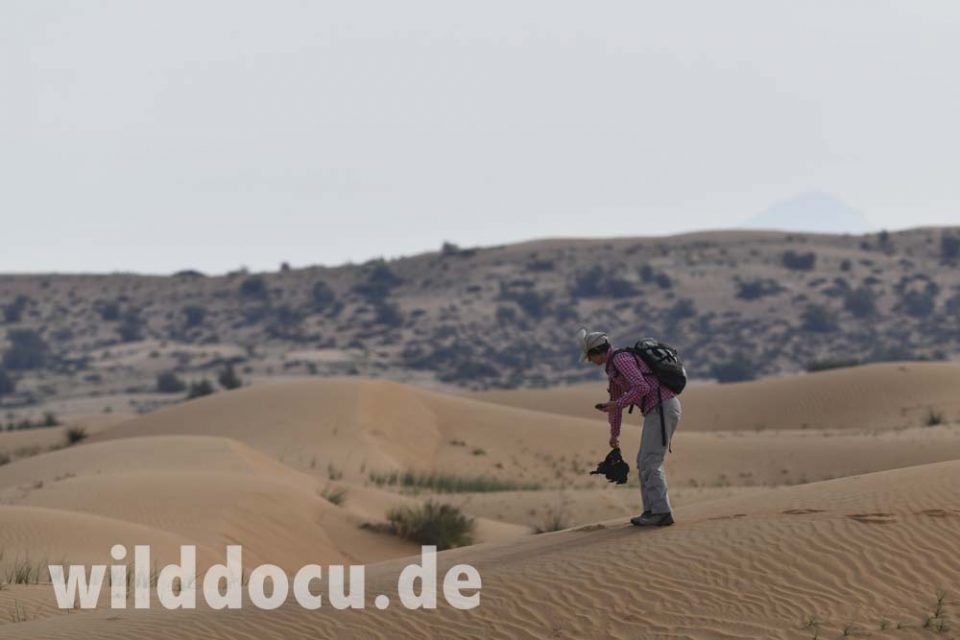
Highlights
I very much enjoyed my staying in the Dubai Desert Conservation Reserve. Instead of describing the daily processes, I simply like to pick out a few beautiful moments and interesting events:
Watching Arabian Oryx really is an outstanding pastime. They often stand majestically on top of the dunes, scanning their surroundings, their white bodies being always very conspicuous.
It seems during evolution it was more important for them to develop an effective way to cope with the desert’s heat, instead of being perfectly camouflaged from predators. I always enjoy seeing them and I am constantly looking for the perfect photo:
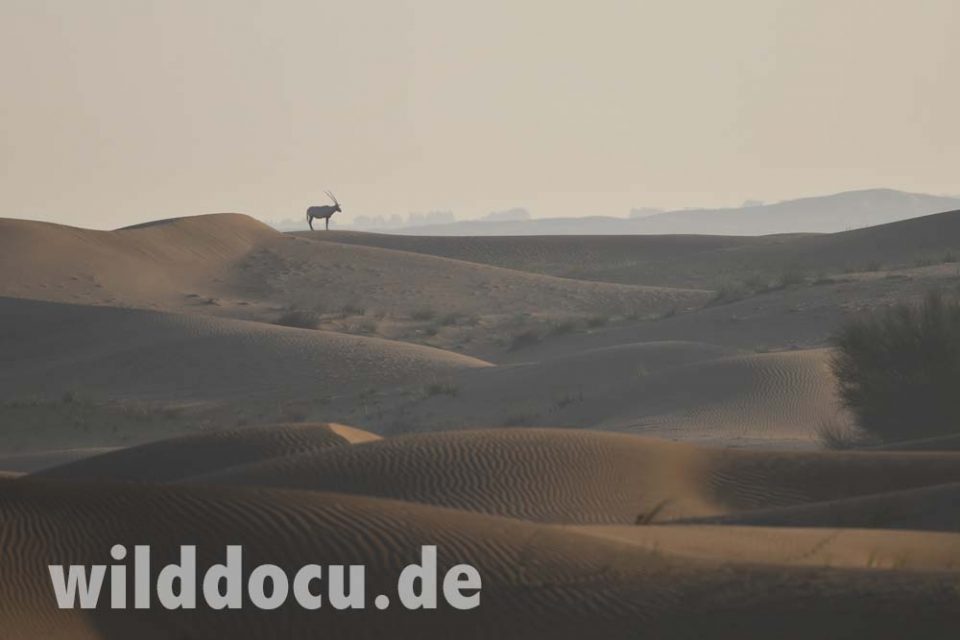
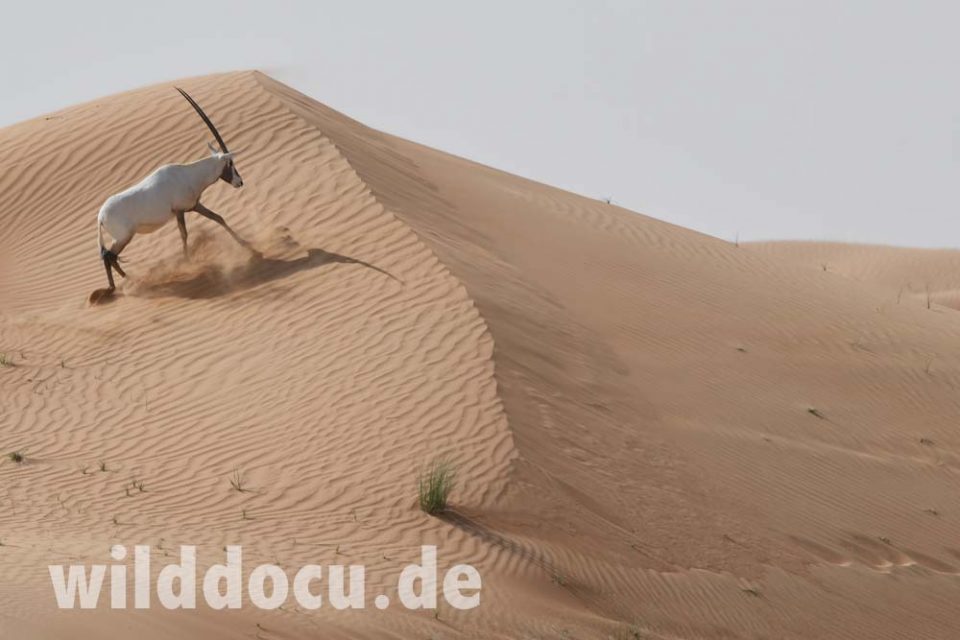
The first evening in the desert I realise that I wouldn’t be able to sleep. I’m drawn out into the desert night. Until 2 am I look for desert rodents with my thermal imaging device. I discover a Cheesman’s Gerbil that initially reacts very sensitively to white light and immediately disappears into its burrow as soon as it is hit by the beam of my flashlight. I try again and again until I finally get some shots. What a beautiful animal!
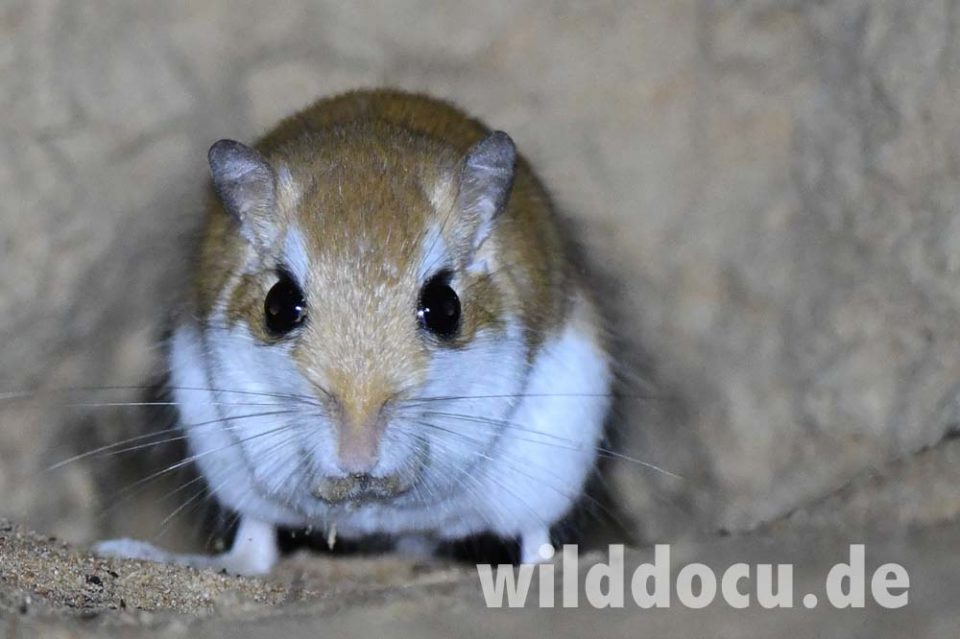
Driving through the sand to get to our study areas is a lot of fun – especially during sun rise. We either use wide tracks that are regularly maintained by graders or narrow, single-lane paths. To avoid getting stuck, we let out some of the air on all wheels. Experience has shown that 1,2 bar is the optimal air pressure. The vehicle floats while driving, but it is not necessary to counteract, the car finds its own track. I can understand that it can be fun to drive cross-country through the dunes – what is referred here as „dune bashing“. But how anyone comes up with the idea of doing this in a nature reserve is a mystery to me.
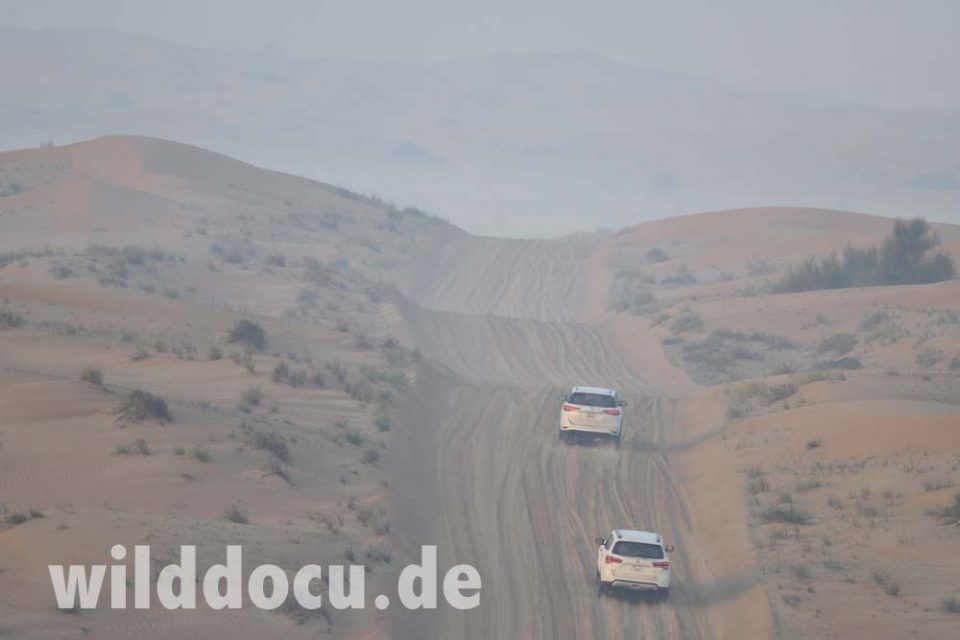
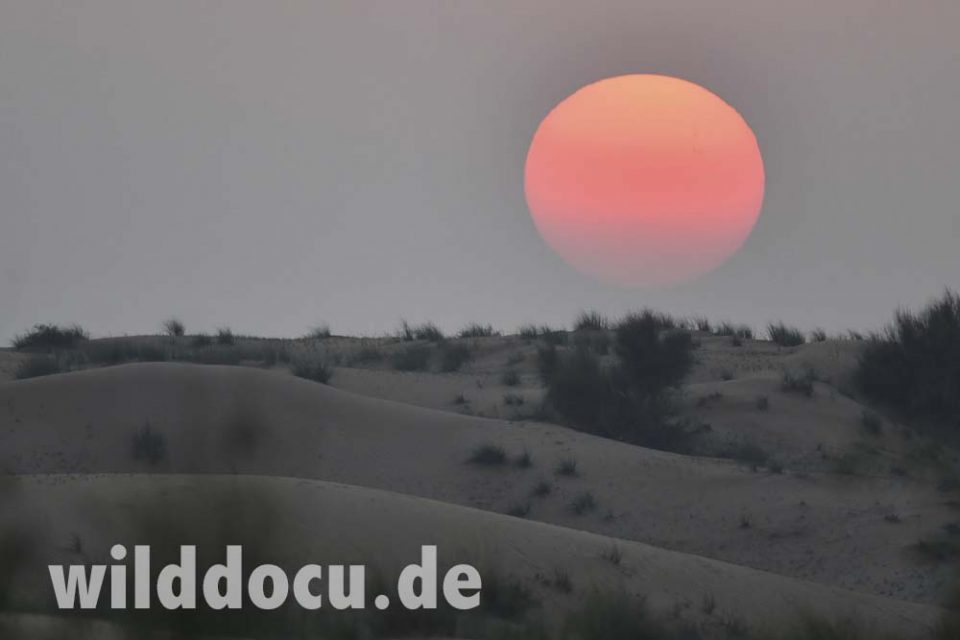
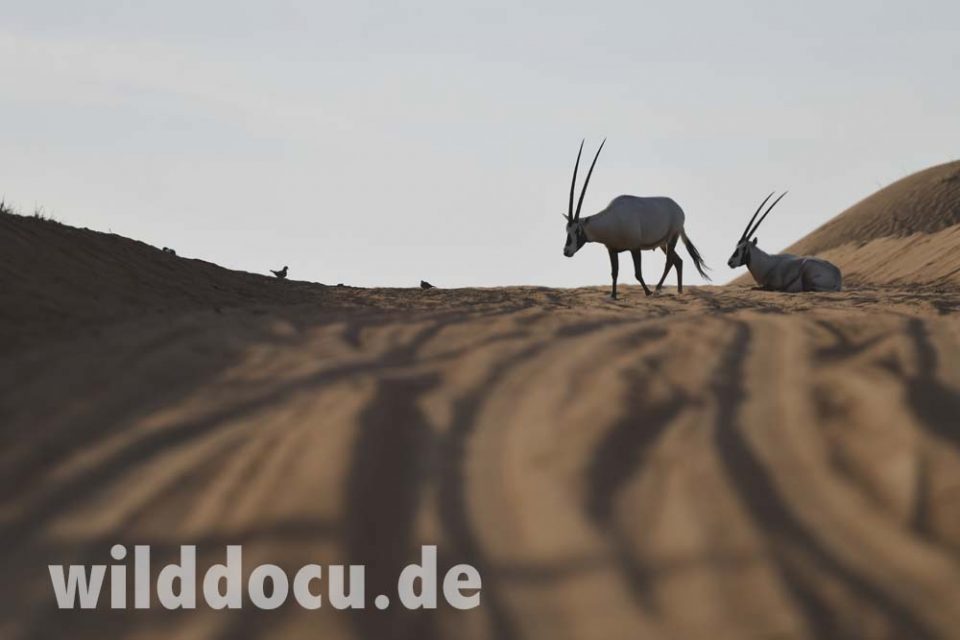
Walking through the desert is the other way to get around. I love it.
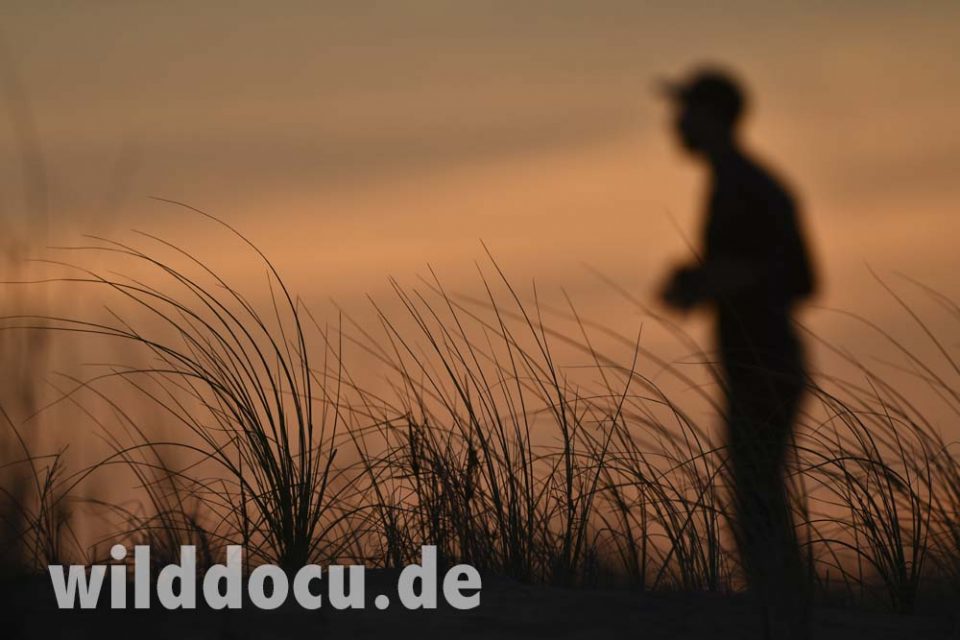
To get to our observation points from the car, we travel a lot on foot. Admittedly, it can be tiring at times. Especially when it goes up the dune, it’s the famous one-step-forward-two-steps-back. But once I had adjusted to it, it was completely okay.
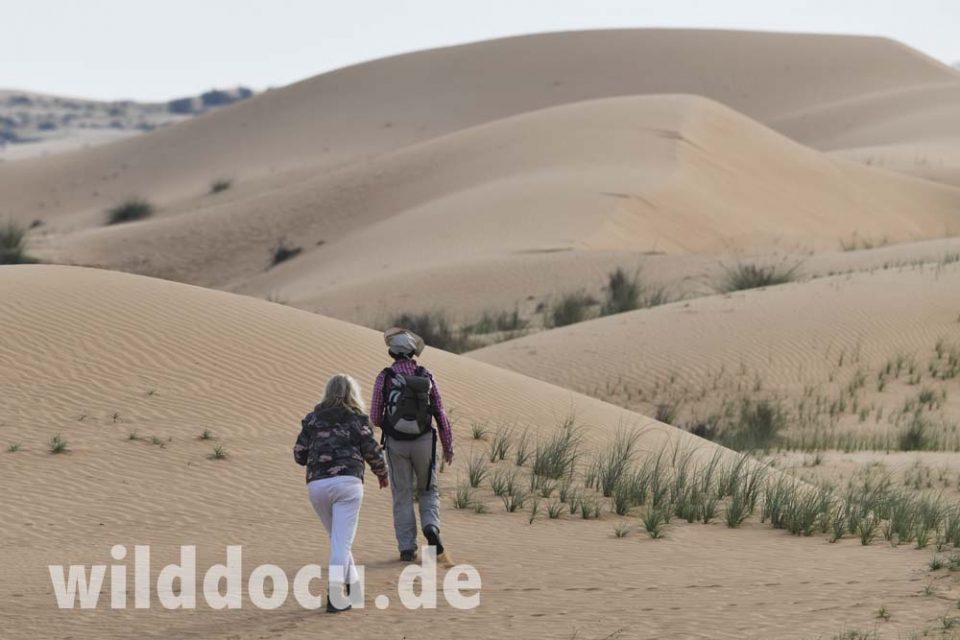
And the highest dunes are perhaps just 30 meters high, and we never walk further than around a kilometre one way. A GPS device helps with navigation.
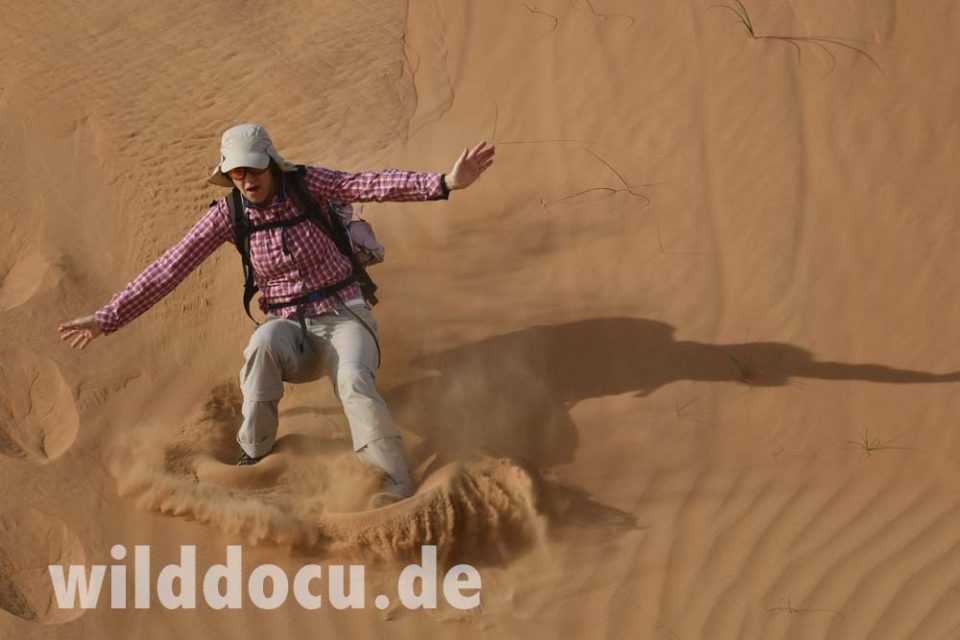
That gives us an idea: Testing our navigation skills. Someone without a GPS is given the direction of travel and has to stay in that direction. A partner stands behind and checks whether the direction of travel is being adhered to. And it’s amazing how in the dune valleys – where you can’t see the horizon – you veer off the route after just a few metres. This can be scary, but it can also inspire your ambition to develop your navigation skills.
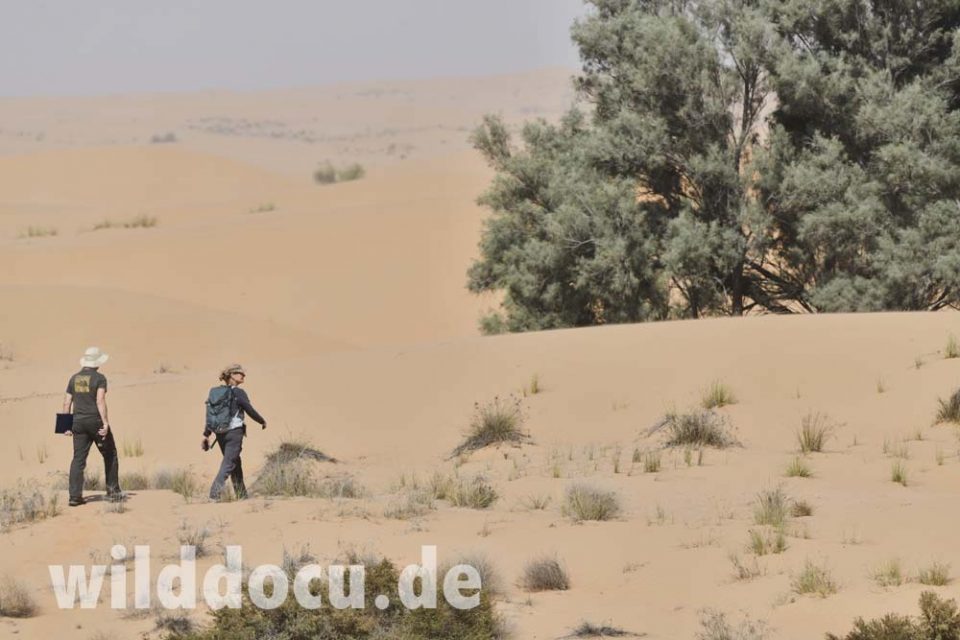
This brings me to the people. I always enjoy meeting others on trips and learn about their interests and motivations to get on a trip like this: There is for example Stephen, a pensioner from England, who has always been interested in biology, but chose a job, when he started his career, that guaranteed him a secure income.
Matthias, 34, from Germany, studied biology and works as an environmental planner. Birds are his specialty – and also his hobby. This is his fifth time taking part in a journey with Biosphere Expeditions. He just wants to do something useful on vacation. A beach holiday „doesn’t relax me“, he says. He wants to be physically active.
Birgit, 47, also from Germany, is a business graduate and currently works for a foundation for disabled people. She cares about the future of our planet and wants to be actively involved in nature conservation. She does not see it as a disadvantage, that she doesn’t have a background in biology. She would also like to speak English better. “I can improve it here,” she says.
Unexpected Encounters: Driving through the desert is not a monotonous journey in which the road in front of you begins to shimmer like a mirage, in which you rub your eyes sore from the desert sand and in which you have to worry about falling asleep behind the wheel because of boredom. No, not at all. The desert is varied, much greener than you think, and behind every dune something alive can scurry – big and small. These are my favourite unexpected encounters:
It’s still early in the morning in the south of the DDCR. While driving I do what becomes a common saying over the course of the trip: „Use the momentum!“ This means hitting the gas at the foot of a dune so that you can get over the top without the tires spinning. We’re over it and someone shouts „Fox!“
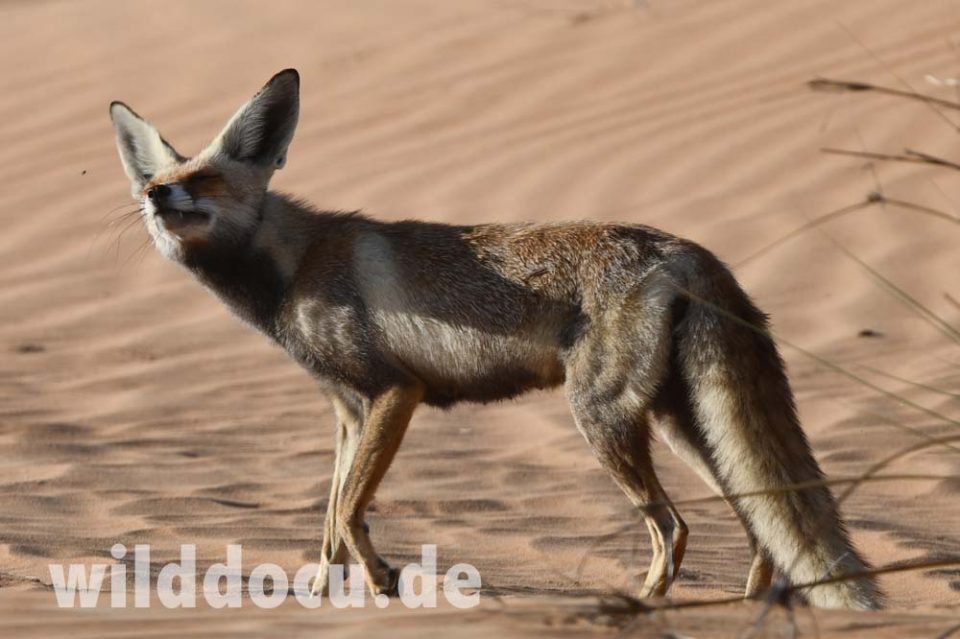
And indeed, a desert fox trots past us. The camera is on my lap. I immediately pick it up and point it at the animal. The fox, actually a vixen, as you can see from the teats, walks past us quite relaxed. There is only a very brief moment when she turns her head back, revealing a canine tooth. Is this a sign of discomfort? Maybe, but overall the impression is, that people in a car don’t bother her much, which is probably due to the fact that the vixen lives in a protected area.
I make a hypotheses based on simple observations: The sandfish or Eastern Skink (Scincus mitranus) is one of the most important prey animals in the Dubai desert during the day. You can often see this lizard species while driving on the roads of the reserve. They are quite shy. As soon as you approach them in your vehicle, they run away and bury themselves in the sand in a frantic movement. Three!!! times I witness predators catching a sandfish:
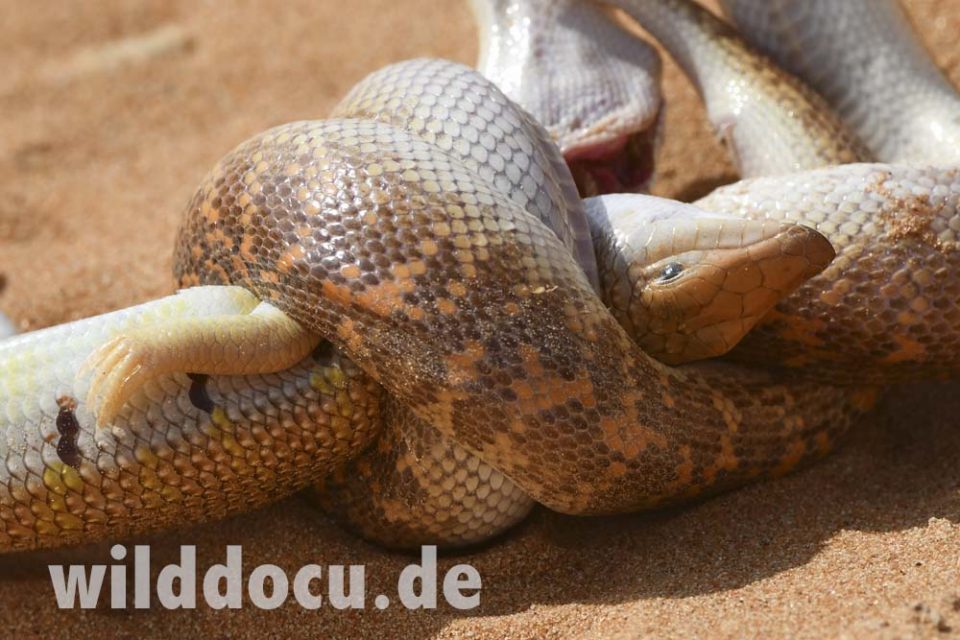
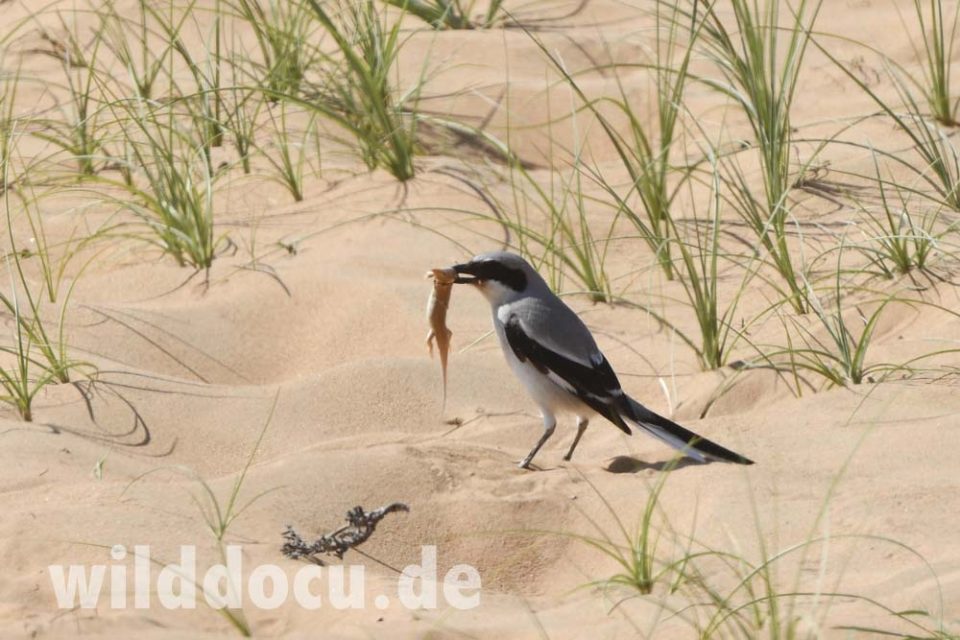
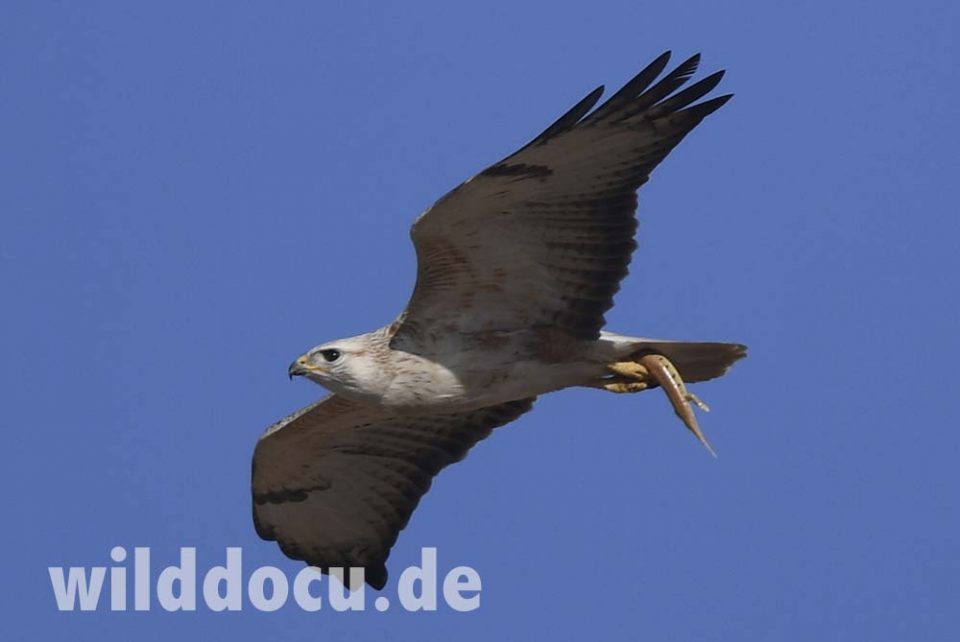
The Jerboa is one of my most-wanted mammals on this trip. Jerboas are typical desert rodents found throughout North Africa and Asia. They hop like kangaroos, have big ears and are in the Dubai desert most commonly seen on gravel plains and flat sandsheets. I get two nights to look for them, and again I enjoy it a lot, to walk under a clear sky and a full moon. But the full moon is probably one reason, why I – unexpectedly – don’t see a rodent at all, let alone a jerboa.
Many animal stories involve an explorer or adventurer searching for a particular animal for days or weeks. Mountains are climbed, lakes are paddled or deserts are crossed with great effort. And then, on the very last day, at the last opportunity, the long-awaited encounter actually happens. We are also experiencing such a classic animal story – even if perhaps on a smaller scale.
In fact, we set out several times during the ten days to survey the Pharaoh Eagle-Owl. Again and again we hike through stands of ghaf trees to see if there might be an owl resting up in the crown, whether there are any castings underneath, or we crawl under bushes to perhaps find a nest on the ground. But no matter how hard we search, we can’t find any of these great birds. But then on the last day, Maria, one of the scientists in the team, organises a reward for us. She knows a tree, that we haven’t examined yet. And that’s exactly where there is an active Pharaoh Eagle-Owl nest.
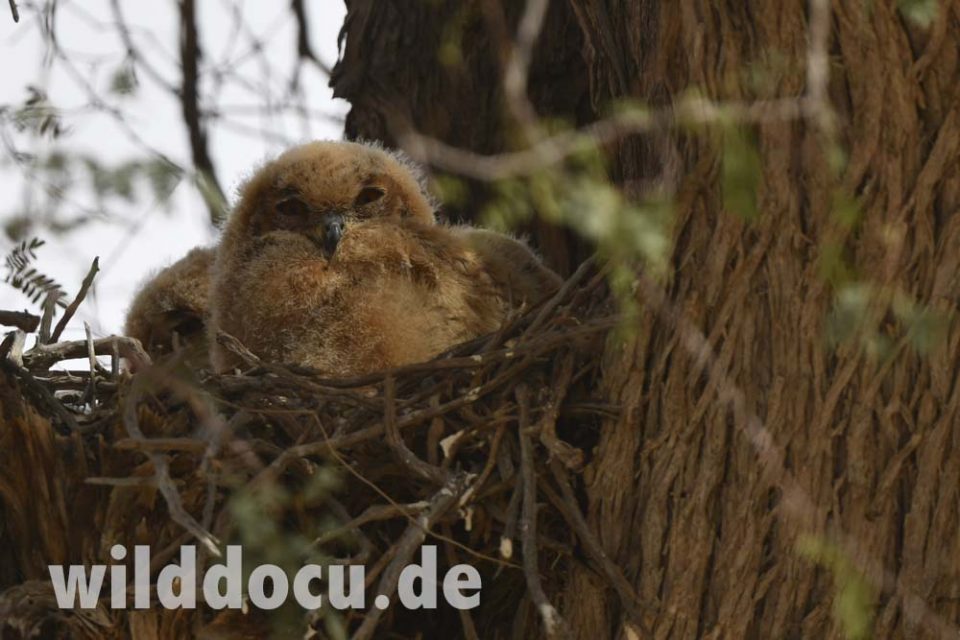
In small groups we are allowed to approach and take a look up at the nest. The nestlings are so cooperative that they meet our gaze curiously but calmly. An adult bird sits on the other side of the trunk and also remains relaxed. Well arranged, Maria! Animal research is fun. And even more so when you’re not just chasing a phantom.
Literature
Aguhob, Jeruel et al. 2018: First record of the endangered Arabian Tahr Arabitragus jayakari (Thomas, 1894) in the Hatta Mountain Conservation Area, Dubai, United Arab Emirates. Journal of Threatened Taxa 10 (11): 12561-12565
Hellyer, Peter and Aspinall, Simon (editors), 2005: The Emirates – A Natural History. Trident Press Limited. Available online: https://petervine.com/books/The-Emirates-A-Natural-History-Peter-Vine.pdf
Khafaga, Tamer and Bell, Stephen, 2015: Assessment of Terrestrial Small Mammals in Dubai Emirate’s Inland Desert. Available on researchgate

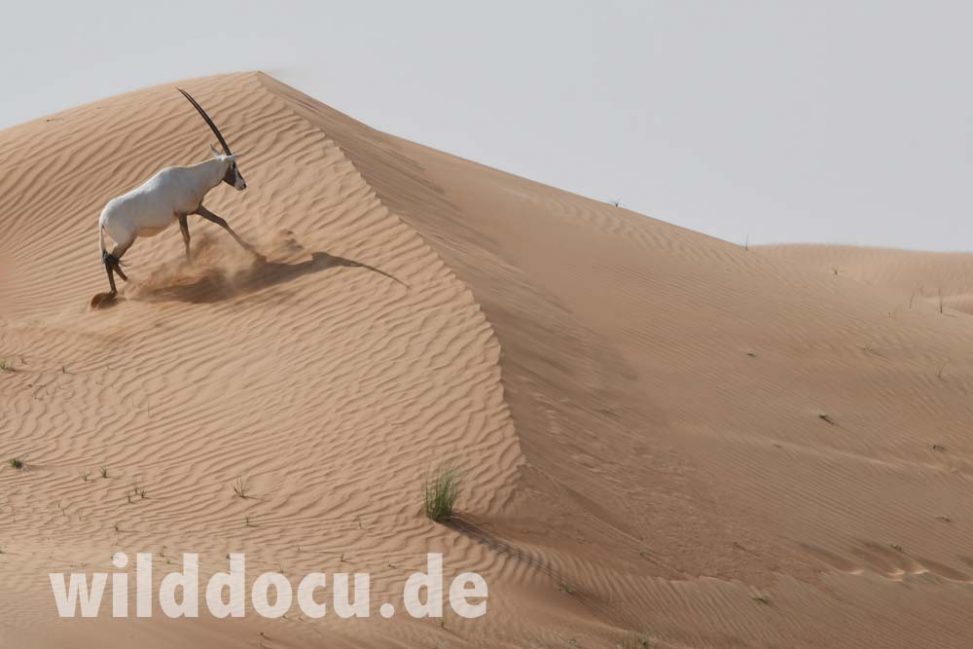
Schreibe einen Kommentar